This post's overview:
- 1 Useful links:
- 2 Here are some things you need to know before taking this trip:
- 3 Here’s a short overview of the 2+ week South America itinerary:
- 4 2+ weeks in South America: Peru, Bolivia and Ecuador itinerary
- 4.1 Days 1& 2: The highlights of Lima
- 4.2 Flying to Cusco
- 4.3 Day 3-5: Cusco and Machu Picchu
- 4.3.1 Where to stay in Cusco
- 4.3.2 Exploring Cusco: the best things to do and see
- 4.3.3 Where to eat in Cusco: the best restaurants
- 4.3.4 The best day trips from Cusco if you have a full day or you’re planning to stay a bit longer in Peru
- 4.3.5 Taking a train to Machu Picchu (Aguas Calientes)
- 4.3.6 Where to stay and what to do in Aguas Calientes
- 4.3.7 Visiting Machu Picchu
- 4.4 Strikes in Peru and what to do in case your return train is cancelled
- 4.5 Flying to La Paz from Lima:
- 4.6 Day 6: Exploring La Paz
- 4.7 Day 7: Salar de Uyuni and a night at a Salt Hotel
- 4.8 Days 8-10: La Paz and some of the best day trips
- 4.9 Days 11-12: A trip to Mindo from Quito, Mitad del Mundo
- 4.10 Days 13-15: Staying in the Amazon in Ecuador – Napo Cultural Center
- 4.11 Day 16: Exploring the city centre of Quito
- 4.12 Summary of our 16-day trip around South America: Peru, Bolivia and Ecuador in 2+ weeks!
- 5 Some other posts you might like:
Are you planning a trip to South America and only have 2 weeks of vacation? Don’t worry, it is possible to see a lot of places in South America just in 2 weeks. In this article, I will be sharing our itinerary for 16 days in South America, visiting Peru, Bolivia and Ecuador. 16 days is just a but more than 2 weeks, but these 2 days actually play a big difference for a difficult (in terms of planning) trip like that, so if you have 16 days to spend in South America – that’s amazing.
If two weeks of annual leave is all you can have, and you really want to visit Peru, Bolivia and Ecuador in 14 days, this would also work, you will just need to spend less time in one of the destinations of this trip (reduce time spent in La Paz by one day and spend less time in Ecuador as well).
Useful links:
…that are mentioned in this post (so you have them all in one place):
Travel insurance for South America: you can use EKTA Travel insurance
Booking flights in South America – Skyscanner
Hotels – Booking.com the overview of hotels by day you can find in the short itinerary a few paragraphs below
Tour to take in Peru: Lima food tour
Rainbow mountain tour from Cusco
Train tickets from Cusco to Machu Picchu: Peru Rail
Bus to Salar de Uyuni from La Paz
Salt Hotel in Salar de Uyuni – Hotel de Sal Luna Salada
La Paz tours: La Paz teleferico tour and La Paz street food tour
Rental car in Ecuador: book here
Our Amazon Lodge in Ecuador: Napo Cultural Center
Quito walking tour – check availability here
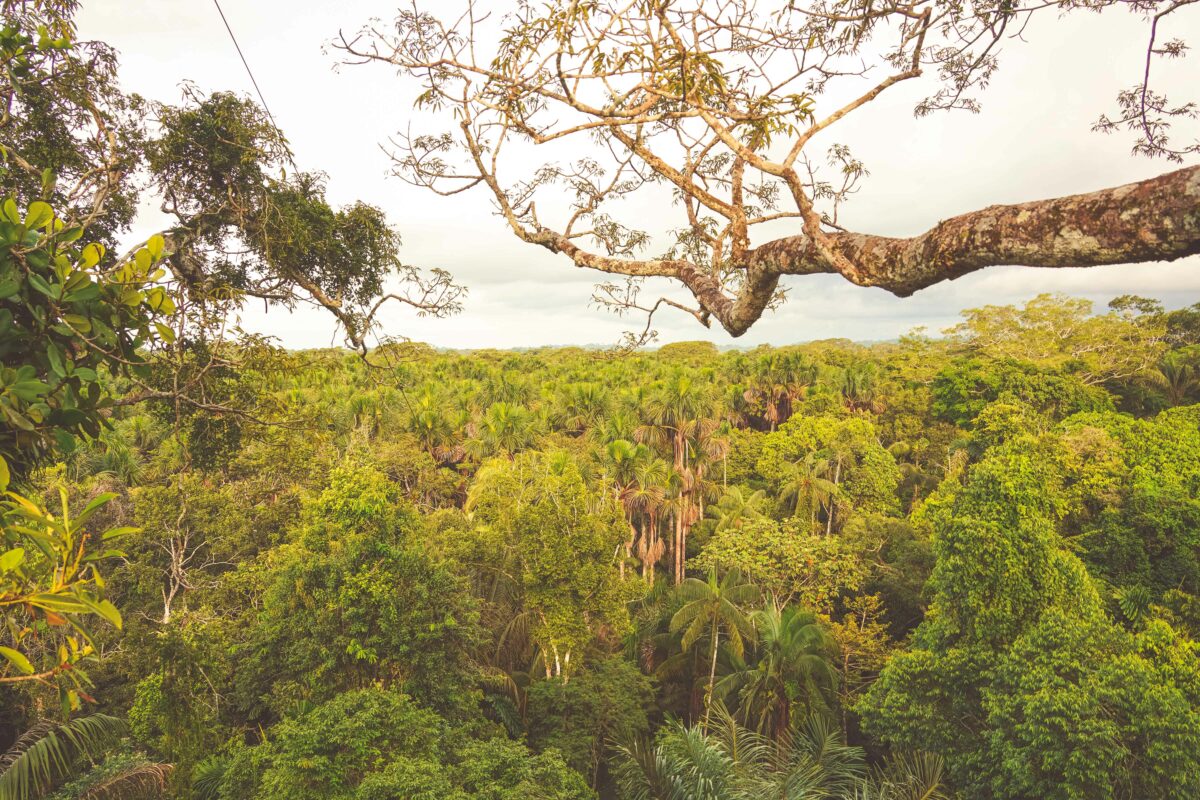
Here are some things you need to know before taking this trip:
How to travel between Peru, Bolivia and Ecuador if you only have 2 weeks in South America?
The easiest way to travel between Peru, Bolivia and Ecuador is by buses and planes. However, not everyone can sleep in night buses (*quietly raises a hand*), so it is possible to travel entirely by air. If you only have 16 days in South America, I don’t recommend travelling just by bus (although it would be possible, especially if you buy multi-city flights, e.g. arriving to La Paz and departing from Quito. That way, it would be possible to start your trip in La Paz, head to Salar de Uyuni by bus, return to La Paz, take a bus to lake Titikaka, cross the border to Peru and take a train or bus to Cusco. The rest of the buses would take simply too much time, unless you want to spend 22 hours in a bus instead of 1 hour in a plane from Cusco to Lima. It’s totally fine if you have 2 months in South America, but it wouldn’t work very well if you only have 2 weeks).
For buying flights in South America, we used Skyscanner – it helped us to find the cheapest fares! Another tool to try is WayAway.
What to pack for 2 weeks in South America?
The packing list for 2 weeks in South America depends on the season when you’re visiting the continent. However, some places like La Paz and Quito have similar weather all year long, so the packing list shouldn’t change drastically. Lima might be colder or hotter depending on the season and the Amazon rainforest in Ecuador can have more or less rainfall depending on the month.
For 2 weeks in South America, I recommend bringing many layers, so you can easily adjust your outfit if it gets cold or hot. Bring at least 5-6 t-shirts, tank tops, long sleeve shirts, shorts, leggings, long fast-drying trousers (2-3 pairs), fast-drying shirts (3 pcs), fleece jacket, trainers, leather boots, sandals, waterproof backpack, a few dresses if you wear those, hoodies, sweatshirts and a crossbody bag with a lot of hidden pockets (Lululemon makes bags like this).
Here’s a short overview of the 2+ week South America itinerary:
Day 1: arriving to Lima, exploring the city, night at Ibis Styles Miraflores
Day 2: exploring Lima in the morning, afternoon flight to Cusco, night at Marriott Cusco
Day 3: exploring Cusco in the morning, 1pm train/bus to Aguas Calientes (Machu Picchu), a night at Casa Andina Machu Picchu
Day 4: Exploring Machu Picchu, evening train to Cusco, a night at Novotel Cusco
Day 5: Cusco and evening flight back to Lima, then a flight to La Paz
Day 6: Arriving at La Paz airport (probably late at night / early in the morning), exploring La Paz, night bus to Salar de Uyuni
Day 7: Day tour to Salar de Uyuni, a night at Hotel de Sal, Luna Salada (or a night bus to La Paz)
Day 8: Flight to La Paz with 5 hours to spend in Cochabamba, a night at Selina La Paz or MET Hotel La Paz
Day 9: A day tour of your choice: Copacabana (Titikaka Lake) or a tour to one of the mountains
Day 10: Exploring La Paz, late night flight onwards to Quito through Lima or Bogota
Day 11: Arriving in Quito, driving to Mindo, night at Casa Divina
Day 12: Birdwatching in Mindo, visiting Mitad del Mundo, evening in Quito
Day 13: Flying to Coca, staying at Napo Cultural Center in Yasuni (Amazon adventure)
Day 14: Amazon rainforest
Day 15: Amazon rainforest
Day 16: Flying back to Quito, exploring the city centre, flying back via Lima
Alright, without further ado, let’s start with the best itinerary for slightly more than 2 weeks in South America!
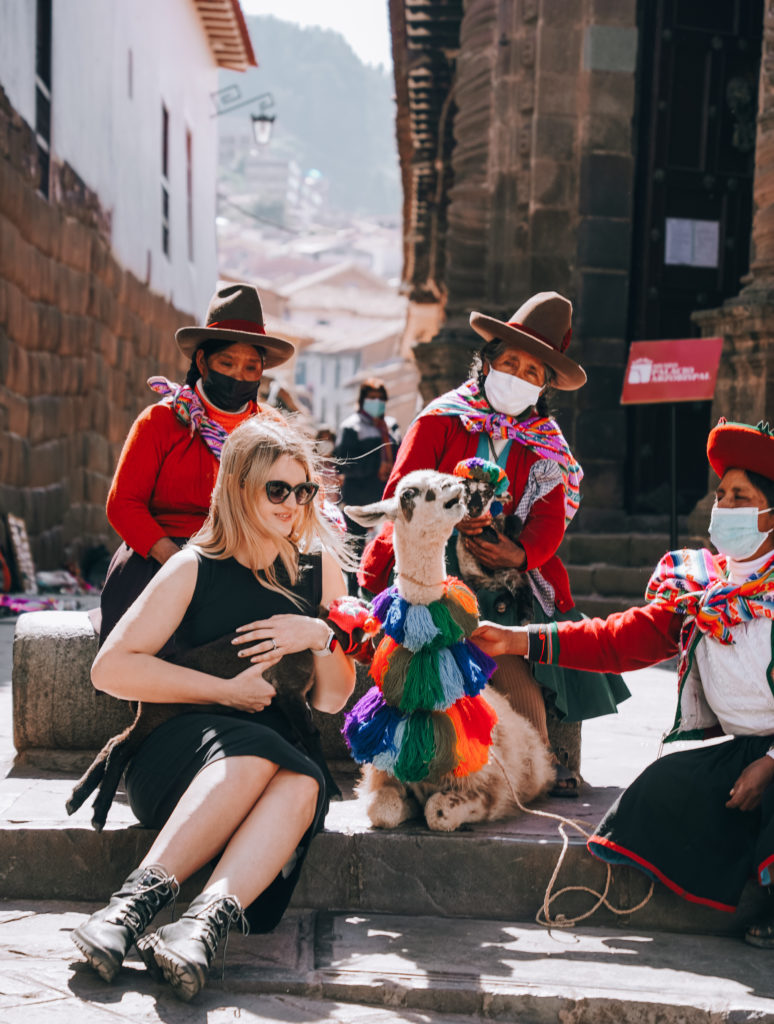
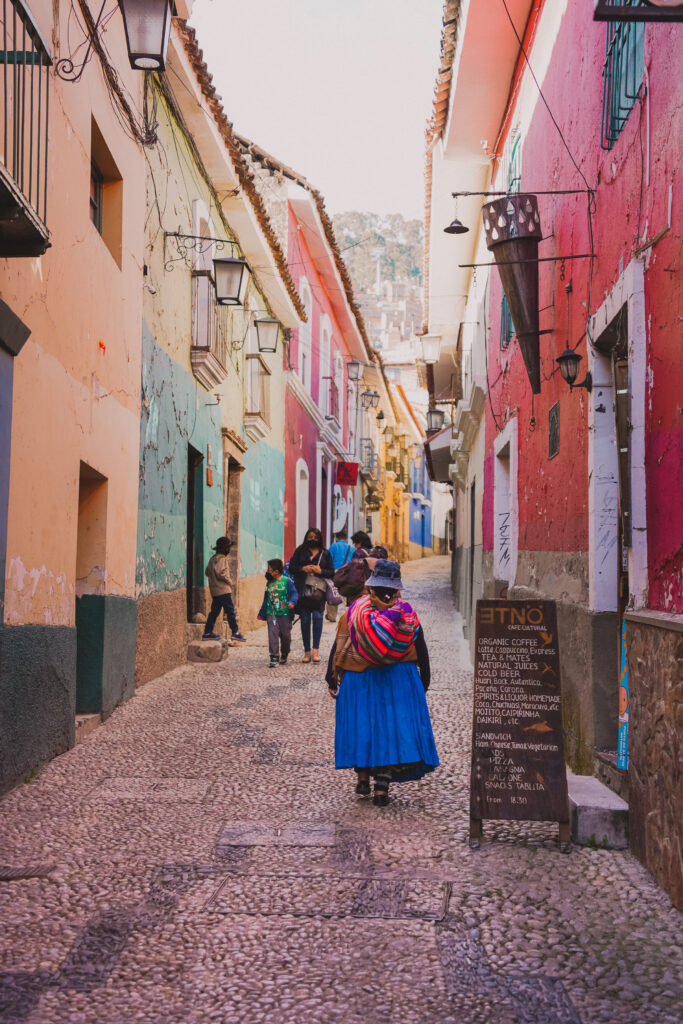
2+ weeks in South America: Peru, Bolivia and Ecuador itinerary
Days 1& 2: The highlights of Lima
Lima airport and the best places to stay in Lima
Lima airport is located right inside the city, so getting to the city from the airport doesn’t take too long – around 30-40 minutes, depending on the traffic. The easiest (hassle-free way) is pre-booking a transfer in advance – then somebody will be waiting for you at the airport. You can use GetTransfer for that. You can also connect to airport wifi or use roaming to ask for an Uber or Cabify car and pay around $13-16 for that. Uber works well at the airport, but in the city, it’s not so good. It’s almost always way faster to just flag a taxi on the street (and cheaper as well), however, make sure to ask the price before starting the ride. Even though the majority of taxis use the meter, some don’t, and you might end up overpaying by a lot!
Miraflores and Barranco are two areas that are most popular with tourists. If you’re looking for an affordable hotel, try Selina Miraflores or Ibis Styles Miraflores (both in the $30-50 range per night). Alternatively, Radisson Red Miraflores or Miraflores Park by Belmond are both great options if you want a fancier hotel.
The best things to see and do in Lima in 2 days
I’ll give you a very brief overview of the best things to do in Lima in 2 days. If you want to see our detailed itinerary, you can find it in this post: a weekend in Lima – the best things to do in Lima in 2 days!
Here are some must-see places and the best things to do in Lima in 48 hours:
Things to do in the Historic Centre of Lima
- Plaza de Armas aka the main and the most beautiful square in Lima. There are plenty of beautiful buildings on different sides of the square, but the most impressive one is the Metropolitan Cathedral of Lima. It’s a working cathedral, so the entrance is free, but make sure to observe the rules and some things are not allowed (e.g. taking videos, especially during a mass).
- Basílica y Convento de San Francisco de Lima – it’s famous for its underground catacombs. A lot of tourists visit those catacombs, as they are often mentioned as one of the most famous attractions of Lima!
- The streets of Lima City Centre – it’s nice to just walk around in the historic centre of Lima and explore different streets, look at the cafes and restaurants and wander inside cute stores and souvenir shops
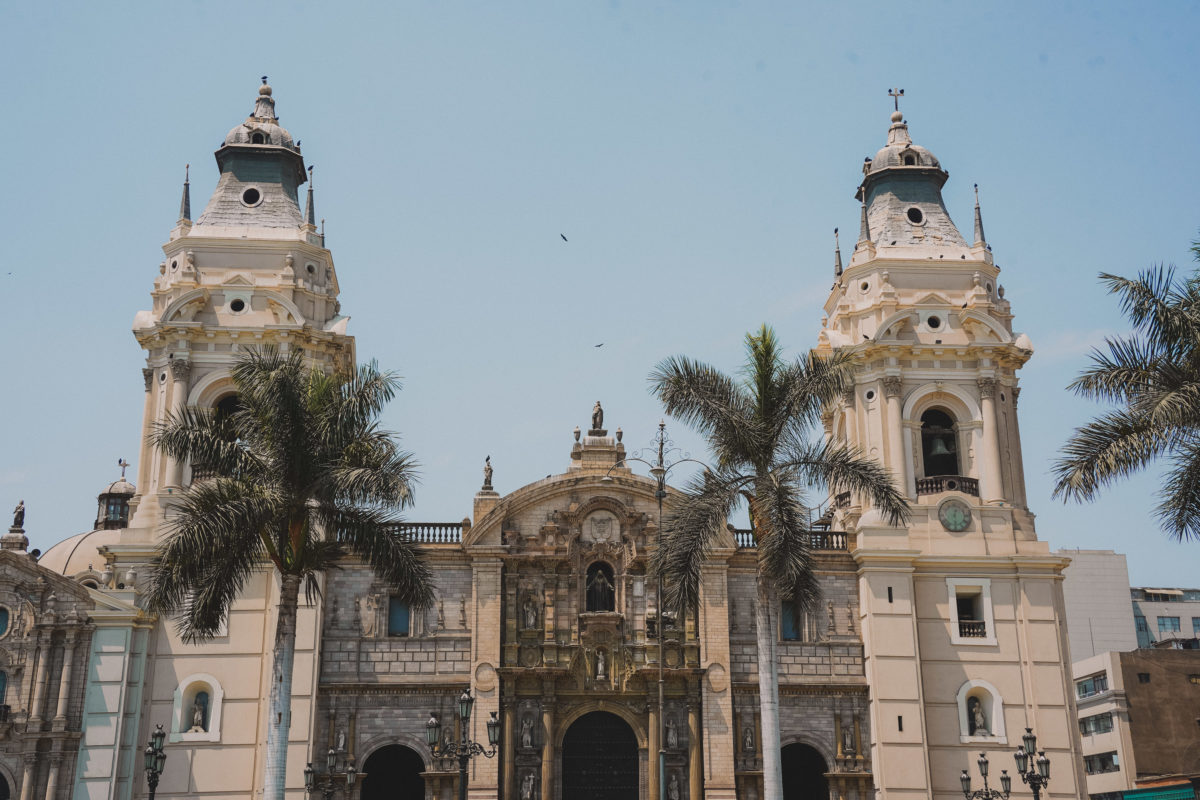
Amazing things to do in Miraflores
Miraflores is one of the leafiest districts of Lima and it’s also the most popular area for eating out and shopping. Most tourists also end up staying in Miraflores, as there are great hotels and plenty of dining options. A stunning beach is also very close to Miraflores!
- Eat in a traditional cevicheria (cebicheria) – La Mar Cevicheria is one of the best ones in the city. The queue was long but the food was worth it! We waited for 45 minutes before we were seated in the bar area and a further 45 minutes until a table became available and we could finally eat! There is also a lovely juice bar located just across the street from La Mar Cevicheria – you should definitely try Lucuma smoothie there, it’s heavenly!
- Once you savoured the ceviche, head to Parque Maria Grau and walk all the way towards Larcomar. On your way, you’ll visit Parque del Amor which was inspired by the Guell Park in Spain. In total, the walk to Larcomar from La Mar sevicheria is circa 3.5 km long. The views on the way are stunning.
- Take a food tour of Lima – the best way to finish the day in Lima is to take a food tour! Now, there are plenty of food tours in Lima; some start in the morning, some – in the afternoon and some start in the evening. For this itinerary, it’s easier to take an evening tour that starts at 5pm or later – check the prices and availability here
- Have a traditional breakfast in a signature restaurant – San Antonio Pasteleria in Miraflores
- Visit a traditional market very close to Miraflores – Mercado 1 Surquillo. Mercado 1 Surquillo is a relatively small market and most of stalls are selling poultry, fish and various cooking supplies. However, there were also some stalls selling juices and smoothies (we had another one made with lucuma) and some stalls selling street food, especially a large variety of soups.
- For lunch, we picked a small restaurant located just outside the market – Bam Bam Sebicheria and it was excellent. The portions were huge and they were only half price of what we paid in La Mar yesterday. Make sure to try the speciality there – the cockles called Conchas Negras. They are very different from a typical ceviche you might try somewhere else!
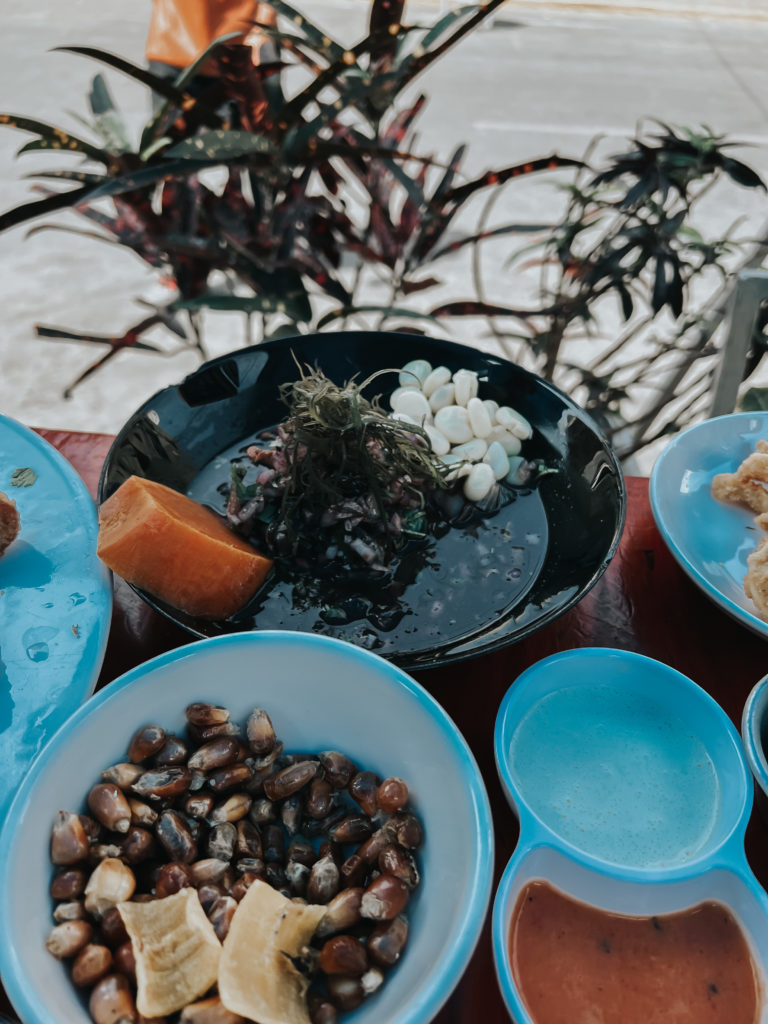
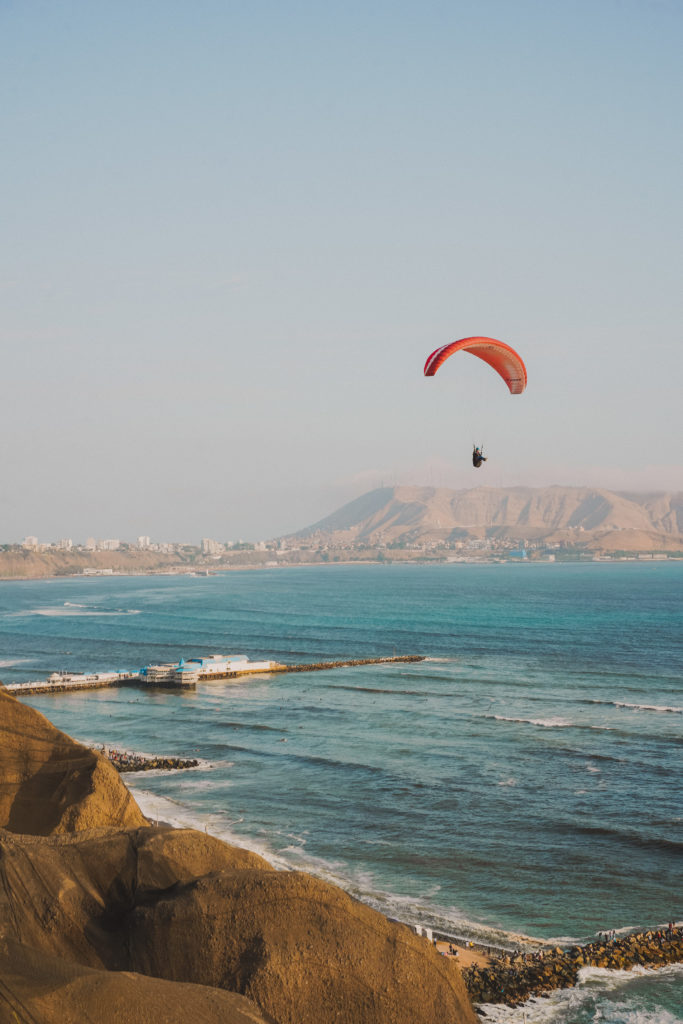
Best things to do in Barranco
When comparing Barranco and Miraflores, it’s hard to say which one is better, because both of them are lovely! However, Miraflores is generally more popular with tourists and has slightly more upscale places, while Barranco has a lot of hipster places and coffee shops.
- Visit the Bridge of Sighs. The most famous landmark in Barranco is the Bridge of Sighs
- Explore the street art of Barranco! Barranco is one of the most photogenic places in Lima, so if it’s nice photos you’re looking for, you’ll be able to take a lot of them in Barranco.
- Visit a street market a few steps away from the Bridge of Sighs and explore the stalls with fruits, cosmetics and some crafts, it’s definitely worth visiting for a few minutes
- Walk the photogenic Bajada de Baños that leads straight to Lima beach.
- Enjoy the beach!
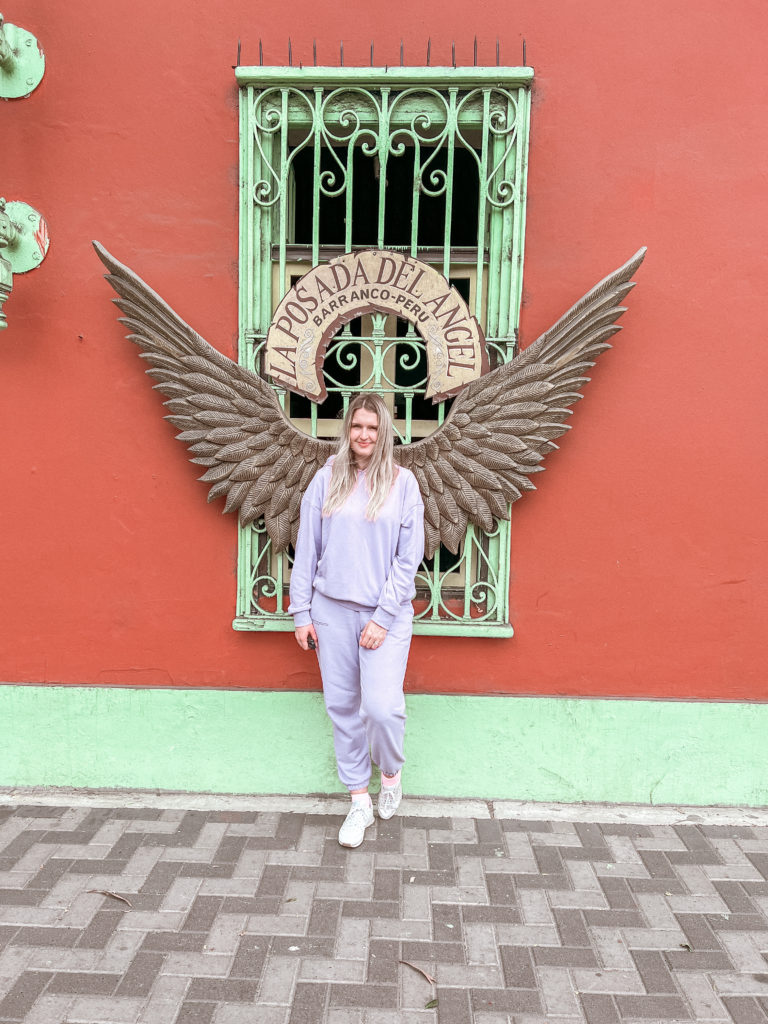
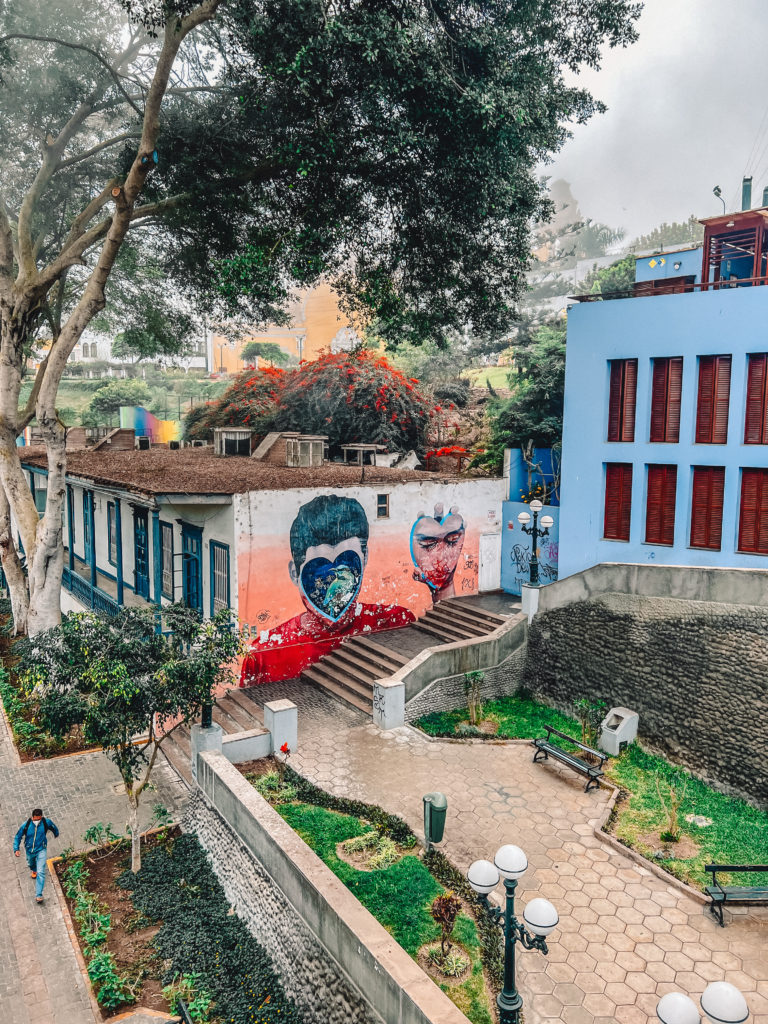
Flying to Cusco
Flying to Cusco only took about 45 minutes and the views from the plane were breathtaking! We expected to feel unwell as soon as we landed, but that wasn’t the case. In reality, the altitude sickness usually kicks in a few hours after you land and not right away. Cusco it’s among the highest-altitude cities in the world. At 3300, there isn’t as much air as people are normally used to, so a lot of people experience some sort of mountain sickness. It usually goes away by itself, but to ease the symptoms (which we felt next day when we woke up), you can drink some coca leaf tea. We also had two aspirins each and it helped tremendously!
Day 3-5: Cusco and Machu Picchu
Where to stay in Cusco
Over our entire stay in Cusco, we stayed at two hotels, one very affordable and another one slightly more expensive. The first one is called El Andariego B&B and we paid for it less than £30 per night. The second one, Novotel Cusco, was around £60 per night.
If you’re looking for a cheerful hotel/hostel, where you can meet others, try Selina! Or, if you have a larger budget, try Marriott Cusco, it’s wonderful.
Exploring Cusco: the best things to do and see
Cusco is one of the best cities in Peru for sightseeing! Here are some of the best things you can do and see in Cusco:
- the main square of Cusco, Plaza de Armas! It’s stunning and it’s always full of people. Since we arrived in the evening, we went to the main square after checking in and it was still full of people. It seemed like Cusco never sleeps!
- 12-angled stone – is a famous artefact located inside one of the walls in central Cusco. You can read a bit more about it and its significance here
- The main cathedral of Cusco located on the Plaza de Armas – it’s free to enter and it’s absolutely stunning inside
- Mercado San Pedro – Cusco’s busiest and most popular market, where you can observe everyday life of the locals as well as buy some food, sweets, fruits and souvenirs
- Qorikancha museum
- Souvenir shopping in Cusco: souvenir shops in Cusco are around every corner and even though most of them sell similar things, surprisingly, the selection and the colours are different in each shop. The rules are the same as everywhere else – the further away from main square, the more affordable are the prices for souvenirs.
- Take one of amazing tours: e.g. a cooking class and San Pedro Market tour, Traditional Cusco sightseeing tour or Cusco food and street food tour
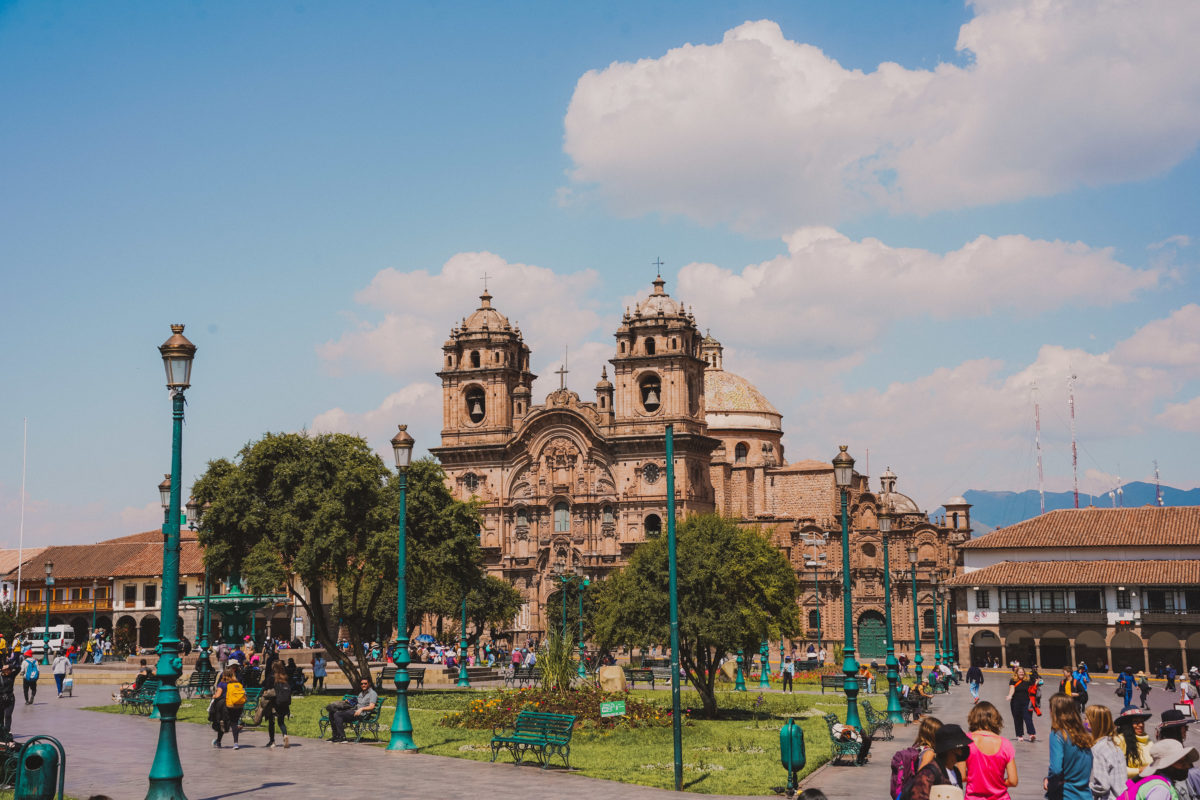
Where to eat in Cusco: the best restaurants
Cusco, as it turned out, has incredible gastronomy! There are plenty of amazing restaurants in Cusco and, good news, – there aren’t even that expensive. Plus, there are plenty of great cheap restaurants and cafes, where you can eat incredibly well for less.
Some of the restaurants I would recommend in Cusco:
Chicha – the famous restaurant of Gaston Acurio, you need to book in advance
Yaku restaurant
Papacho’s for amazing burgers
Cucharitas Ice Cream for the best and very unusual ice creams (and they also serve “normal” lunch food there
The best day trips from Cusco if you have a full day or you’re planning to stay a bit longer in Peru
- Rainbow mountain – it’s actually possible to visit the famous Rainbow mountain on a day trip from Cusco even if you have less than a full day. The tour departs very early (3:30am-4am), so you will be back by 4-5pm. You can check the prices and availability here
- Moras, Moray and Chinchero trip (8 hours)
- Picaq and Ollaytantambo day trip (10 hours) – you would be back by around 6pm
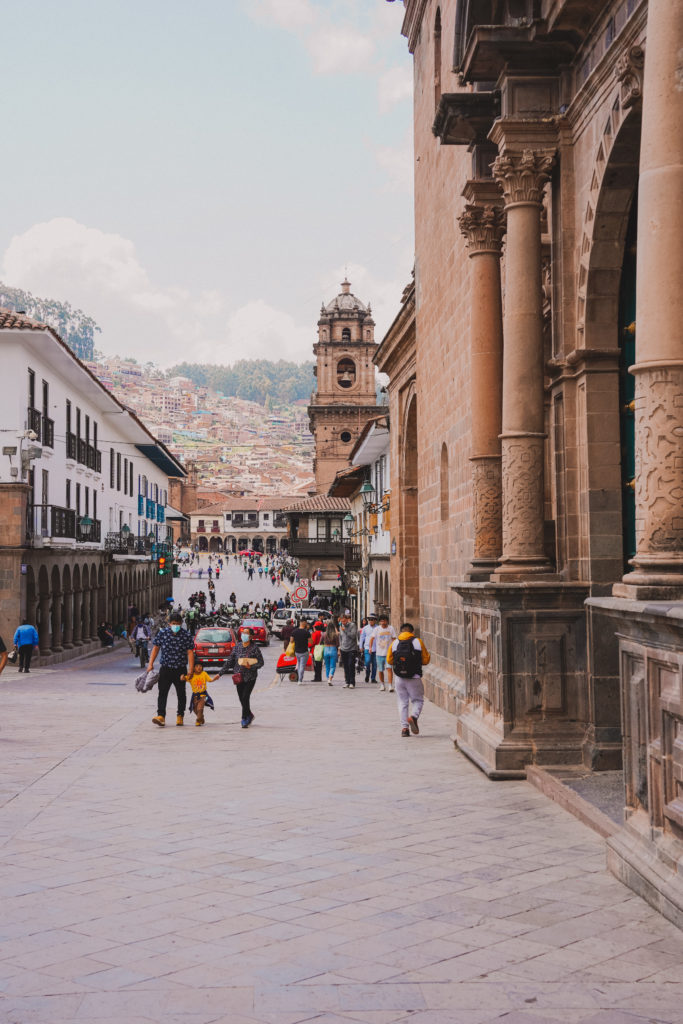
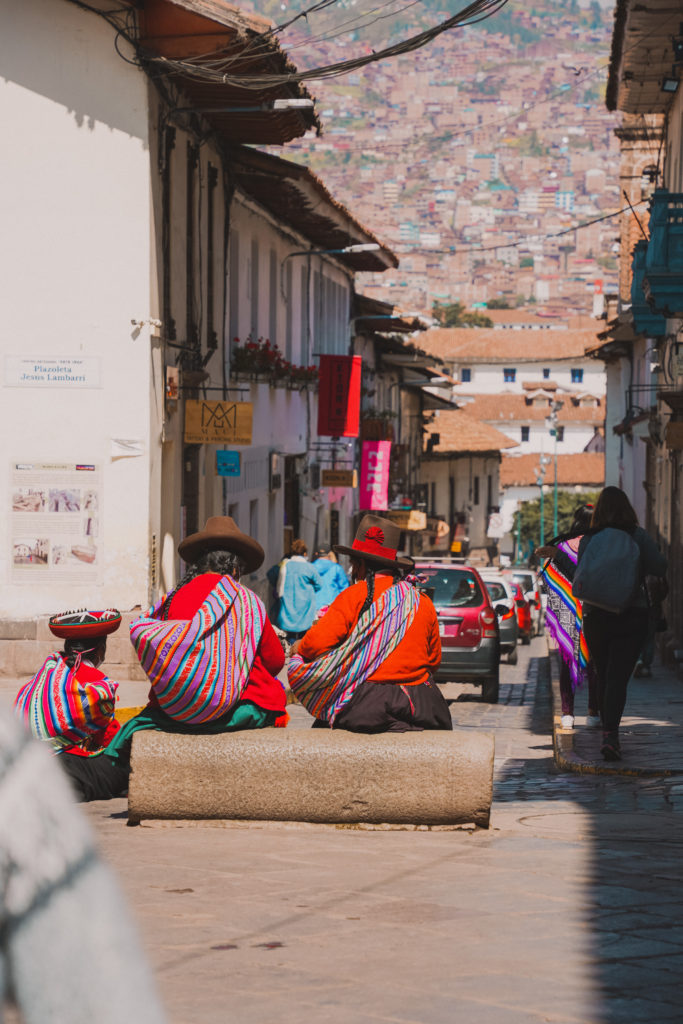
Taking a train to Machu Picchu (Aguas Calientes)
As of now, there is direct service from Cusco to Aguas Calientes, so you don’t need to take a bi-modal service with a minibus and wait for 1 hour in Ollaytantambo!
The journey directly by train takes around 3.5 hours (+/- some time you spend at the train station for the checkin – most people arrive 45 minutes before the train). We used Inca rail, but it wasn’t great, so I’d recommend sticking to Peru Rail!
The journey to Aguas Calientes is amazing, however, having completed it now, we found that it’s probably not worth paying for a more expensive train. We were happy we stuck with the basic train, because the windows were huge anyway and we could see everything. One tip if you’re able to choose your seats: choose the seats that are facing the direction of the travel.
Also, note that you are not allowed to bring a suitcase with you, just a small backpack. If you have nowhere to leave your bag in Cusco, try going to a hostel – they usually offer bag storage for $5 a day!
Where to stay and what to do in Aguas Calientes
Aguas Calientes is a very small town with train tracks right in the heart of the street. It’s not connected to any other town by road – everything and everyone comes by train. Most of the hotels in Aguas Calientes have a river view and are located right next to the train tracks. However, there are some that are located further in the town. If you’re only staying in Aguas Calientes for one night and don’t mind going to sleep relatively late (9-10pm) and waking up at 4am (or with the first train) and you don’t mind the paper-thin walls and the noise of the river, but you value convenience, price and stunning views from your room, you can opt in for one of the hotels near the train tracks! We stayed at Susanna Inn and it was lovely! However, If you want a quieter place, far away from the train tracks, consider staying at Amakonkay. If your budget permits, you can stay at Jaya Suite or even directly near the entrance to Machu Picchu, at the stunning Sanctuary Lodge by Belmond!
There isn’t that much to do in Aguas Calientes considering its size. However, you can visit the local artisanal market next to the train station or go to the Mariposario de Mindo. Some people also visit the Hot Springs (the town is named after them, after all).
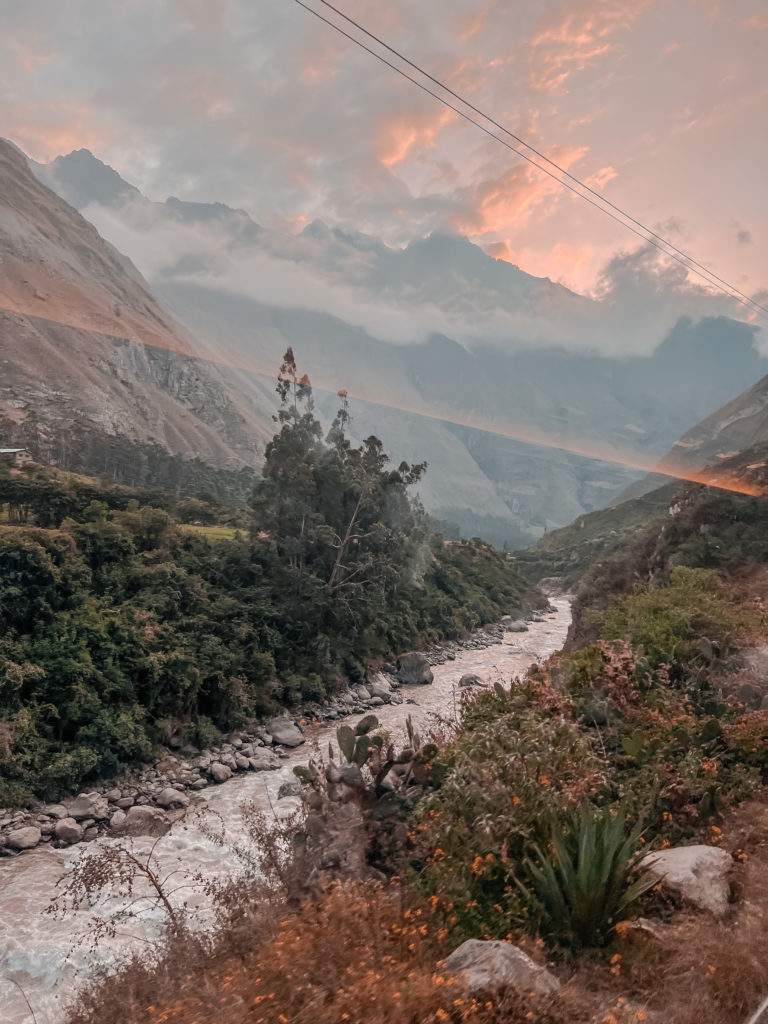
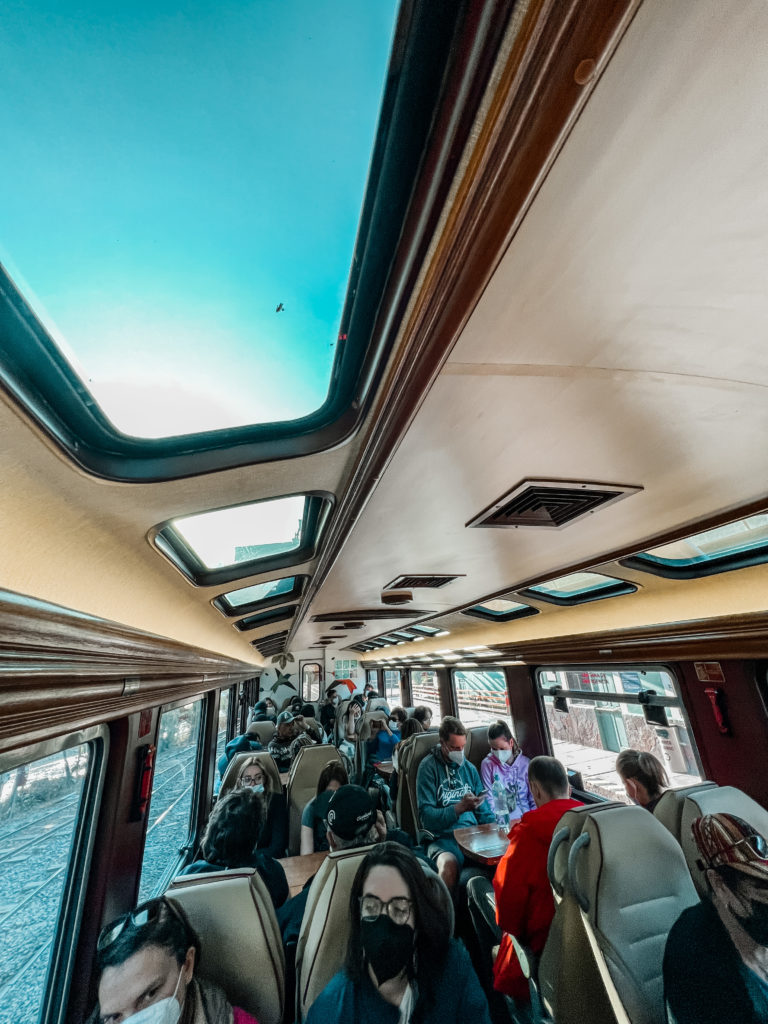
Visiting Machu Picchu
In order to get to the entrance to Machu Picchu, you can either hike for 1.5 hours or buy a shuttle. You can buy a ticket in the town or online here and save a lot of time!
I also recommend buying a ticket to Machu Picchu well in advance (at least a month in advance). You can buy it on the official website here. However, if it’s closer to the date and it seems like the official tickets are sold out, you can always try the tourist agencies. Some of them buy a certain number of tickets for every day, which they can sell to tourists later. If you’re looking for some last-moment tickets (less than 10 days in advance), you can buy them here.
We have found a lot of articles stating that the best time to go to Machu Picchu is early morning – at 6am. That’s because Machu Picchu is not crowded yet and the light looks stunning. However, the articles didn’t mention that if you’re visiting in March – May, it’s very probable that Machu Picchu will be covered by a thick fog in the morning that will clear around 9-9:30am. A lot of people who entered with us at 6am stayed until 9am and could actually see the postcard view of Machu Picchu. That’s because you can’t go back if you continue the walk around the site. In order to see the view, you’ve got to stand at the viewpoint and wait.
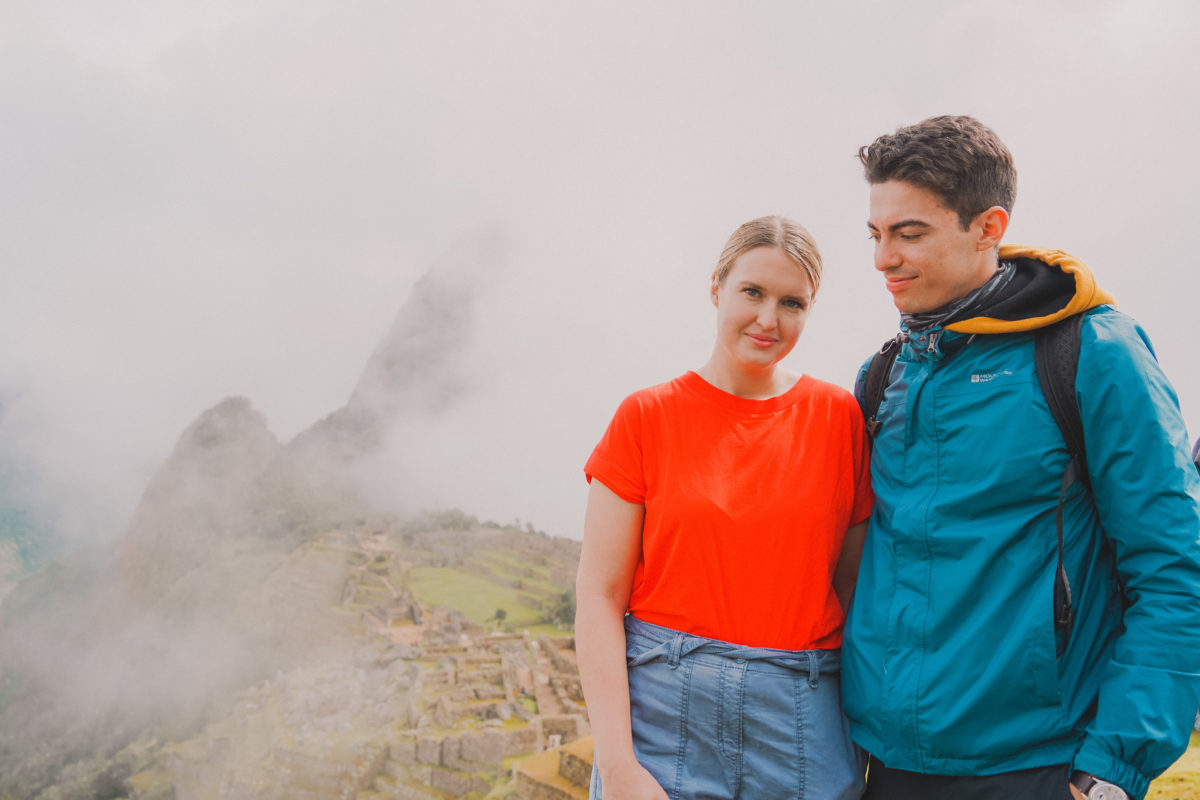
Since we only bought a ticket to Machu Picchu (no Waynapicchu or Huchuypicchu) and then had to wait for 3.5 hours to see it (totally our fault, though for not checking the specifics of visiting Machu Picchu in April), we were pretty tired, hungry and wanted to use the toilet (keep in mind there are none inside the archaeological site), so we completed the rest of Machu Picchu fairly quickly, in about an hour! However, if you’re feeling okay, you can definitely spend longer then, especially if you hire a guide at the entrance or buy a tour!
On average, I would say, it would take 1.5 – 3 hours to complete if you’re only going Machu Picchu, without the montaña! However, some people transform it into a full day trip by hiking all the way to Machu Picchu and skipping the shuttle bus (takes 1.5-2 hours) each way – and the return way is much easier and faster, so sometimes people just get a one-way shuttle.
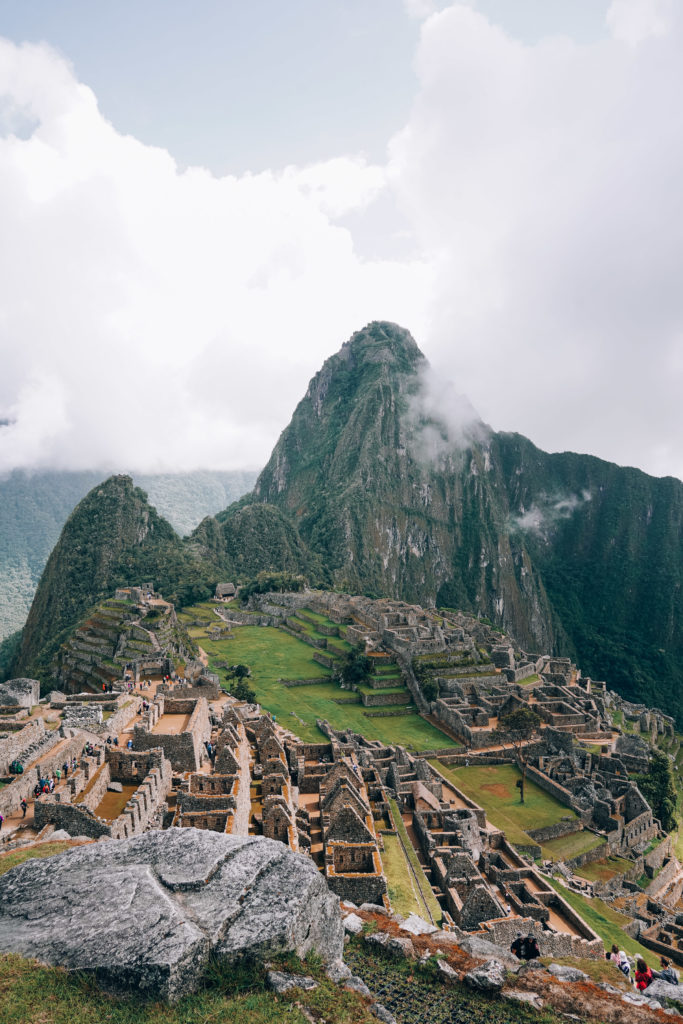
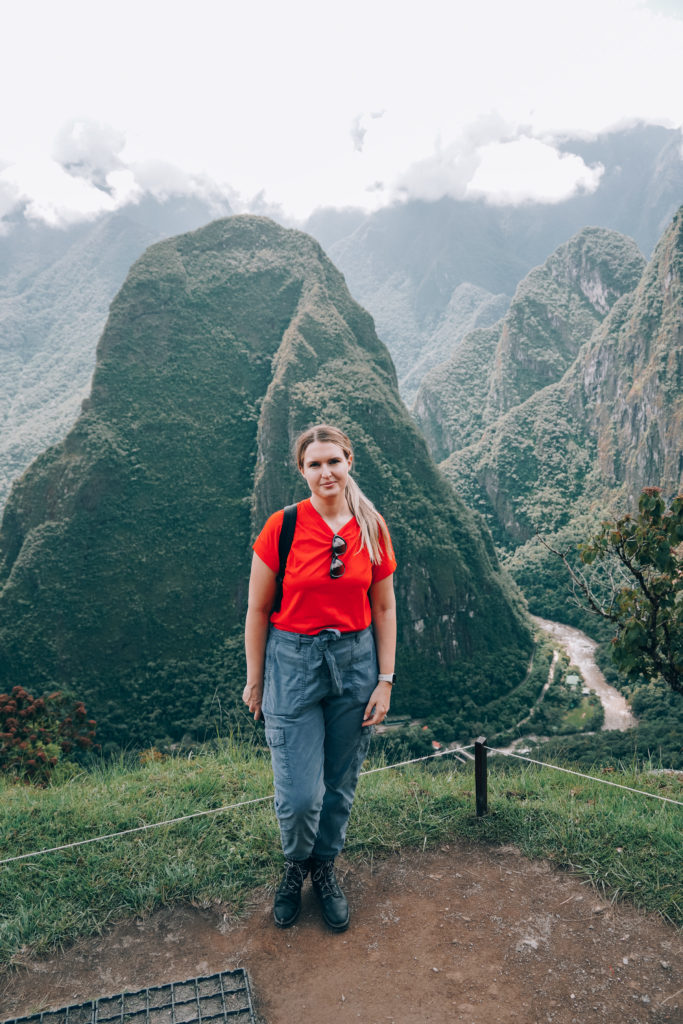
Strikes in Peru and what to do in case your return train is cancelled
Unfortunately for us, there were sudden and unexpected strikes in Peru on the days when we were visiting Machu Picchu, so we actually got stuck there and almost missed the rest of the trip. I assume and hope that yours would go ahead so I won’t spend any time describing what to do in case your train gets cancelled – you can read more about it in this article: Getting stuck in Machu Picchu: how to get out from Aguas Calientes
Usually, the way back to Cusco is pretty straight forward and you should get back to the city in 3.5-5 hours! And then fly back to Lima without any issues!
Flying to La Paz from Lima:
We landed in La Paz around 3:30am! There is a direct flight, but it was twice more expensive than flying via Bogota, so we bought a cheaper flight. Both flights land early in the morning. Since passport control takes quite a bit of time, you will only get to the city centre of La Paz at 5:30am or even 6:00am. Since we had to buy a SIM card and surprisingly, the process took a bit long, we arrived just after 6am.
Day 6: Exploring La Paz
Where to stay in La Paz
Some nicer and posher hotels are located in the South of La Paz, e.g. Achumani station, but it will be very inconvenient to stay there on your first day in La Paz, since most of the landmarks are located in the city centre and that’s where the buses to Uyuni depart from as well. You can stay there later, once you return from Uyuni.
I recommend booking Selina hotel/hostel – it’s affordable, but it’s super stylish and has great internet. We booked it for 2 nights even though we only stayed there for 12 hours, but it only cost us something like $45 (which was worth it, because we managed to sleep extra 4 hours on arrival from Lima and then rest for a few hours before taking a night bus to Uyuni).
For the rest of the stay in La Paz, we booked the recently opened Hotel MET, which was amazing! You can check the price and availability here.
Things to do in La Paz in 1 day (when you’re very tired):
- Have a 3-course lunch in the best restaurant of La Paz – Gustu (from the founders of NOMA in Copenhagen)
- Walk around the historic city centre and visit the beautiful Calle Jaen.
- Climb the mirador Kili-Kili for the best views of the city – the best views would be just before sunset! The view from Kili Kili is really stunning – you can see the 360 panorama of La Paz!
We didn’t spend too much time in the city centre this time, as we knew that we will have more time in La Paz later and even have a proper tour of the city that we booked in advance.
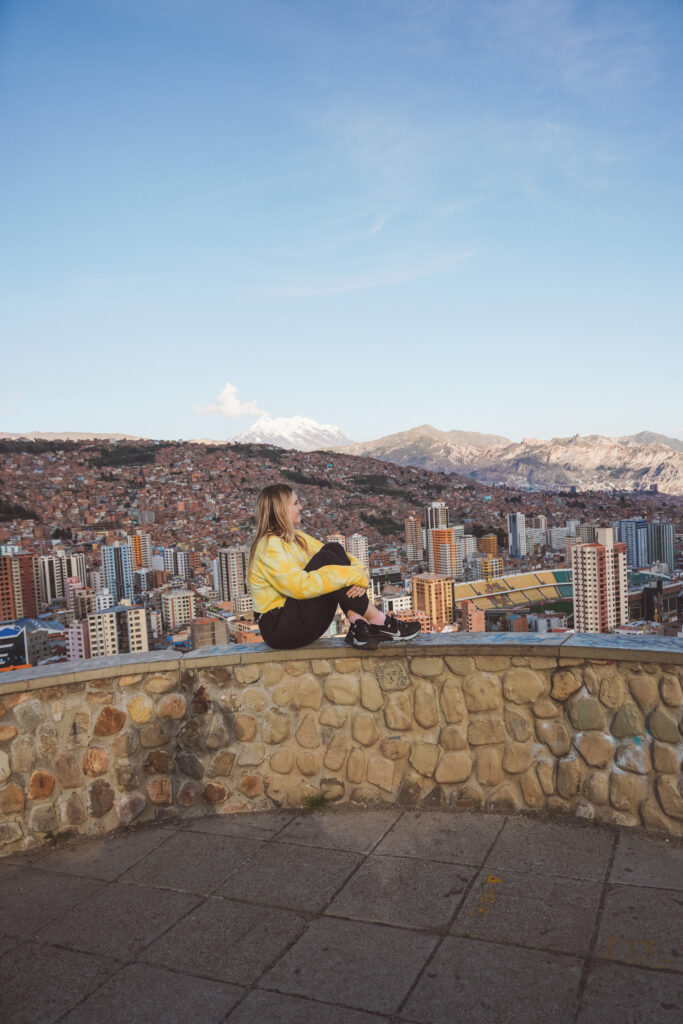
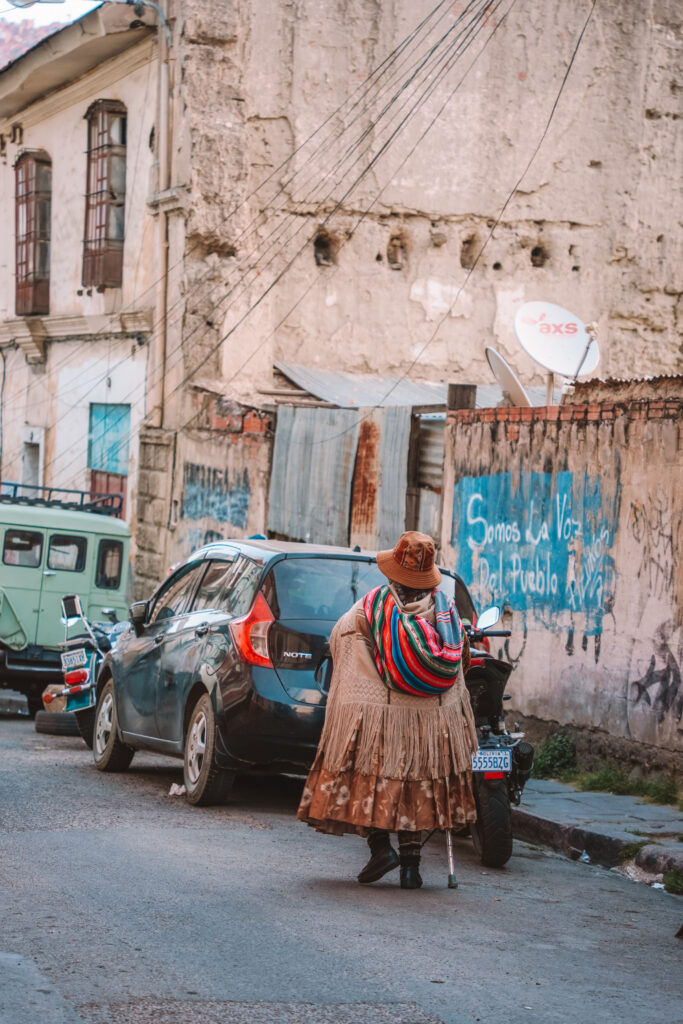
Taking a night bus to Uyuni
The buses to Uyuni depart in the evening, at 9pm, however, you need to be at their office at least 15 minutes prior to that. Most bus operators have their own little offices, where you can register, sit down, visit a toilet or even have some tea. Night buses to Uyuni can be very affordable and simple and can be pretty luxurious as well. You can check the prices and availability of buses from La Paz to Uyuni here >
We booked a Todo Turismo bus. Our bus was amazing – it had two levels – the VIP on the ground level and the normal seats on the first floor. Since I’m pretty bad at sleeping in the buses, we went for the most convenient option, the VIP seats that recline pretty well (probably around 150 degrees or so). Normal tickets cost around $36-38 one way and VIP costs a bit more, around $45 each way. It’s definitely not cheap, but the planes to Uyuni are way more expensive, plus, you’re saving money on the hotel.
The tickets also include food – dinner and breakfast!
Day 7: Salar de Uyuni and a night at a Salt Hotel
A day tour around Salar de Uyuni
We arrived at the Todo Turismo office in Uyuni around 7:45 am in the morning. Their office also has toilets, tea and some comfy sofas if you want to wait there for a little while until your tour starts.
We decided to book this tour it was the best-rated tour in Uyuni and it exceeded all our expectations. We visited all the main attractions, from the train cemetery to the salt mine and museum. We had a wonderful buffet lunch in the middle of Salar, 1 hour in Fish island and then we had a photoshoot in the middle of Salar. Our group was pretty large – we were 18 people in total and our guide shot a video with all the tour participants – it was fun! After that, we had some snacks and wine watching sunset in Salar and even one extra activity – stargazing, which was one of the best memories! It was such a long tour and we got to our hotel around 8:45pm (with a courtesy lift from the tour operator).
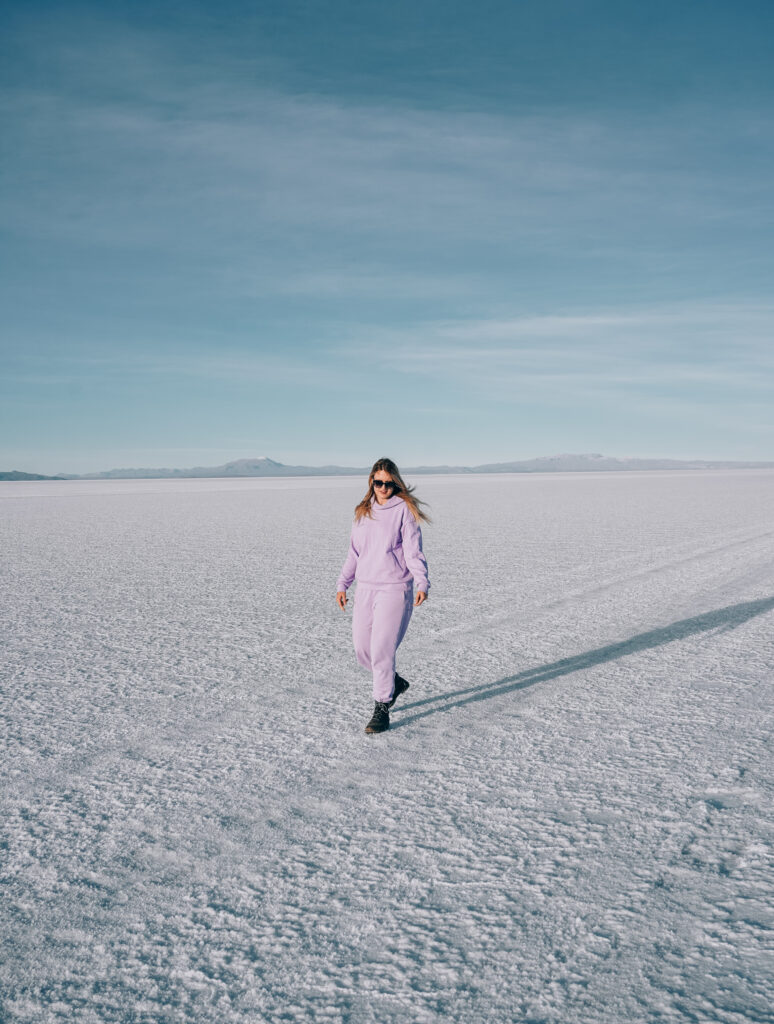
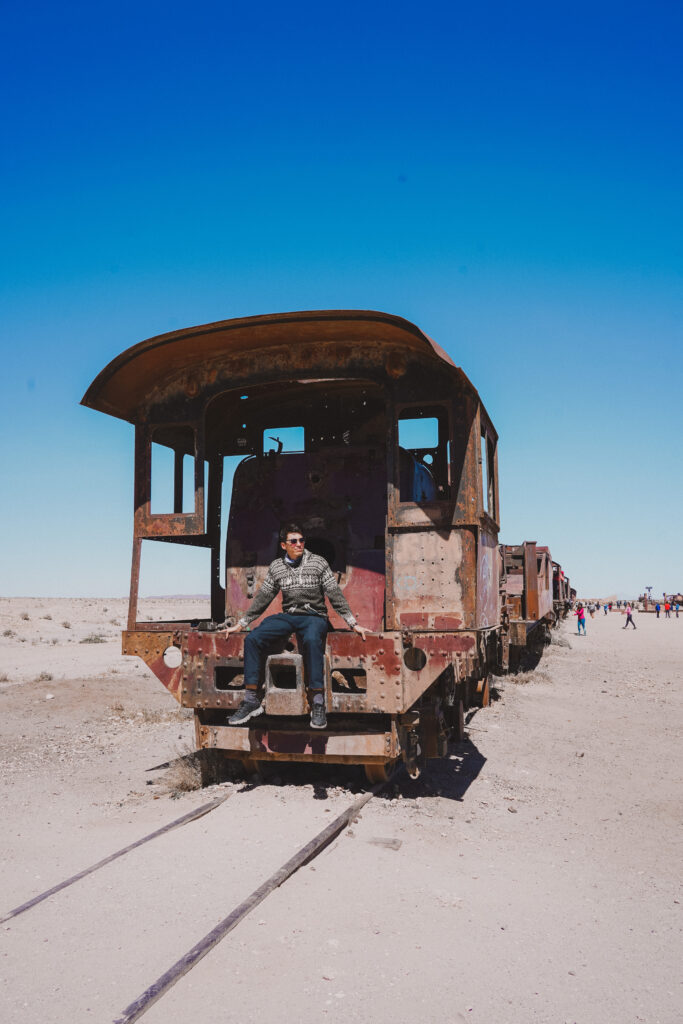
Night at a salt hotel
For one night, instead of taking a bus back, we decided to treat ourselves and stay at a luxury hotel de Sal Luna Salada. Some of the rooms there have a view to Salar (including ours), which was amazing. Everything at this hotel was made of salt, even some of the furniture!
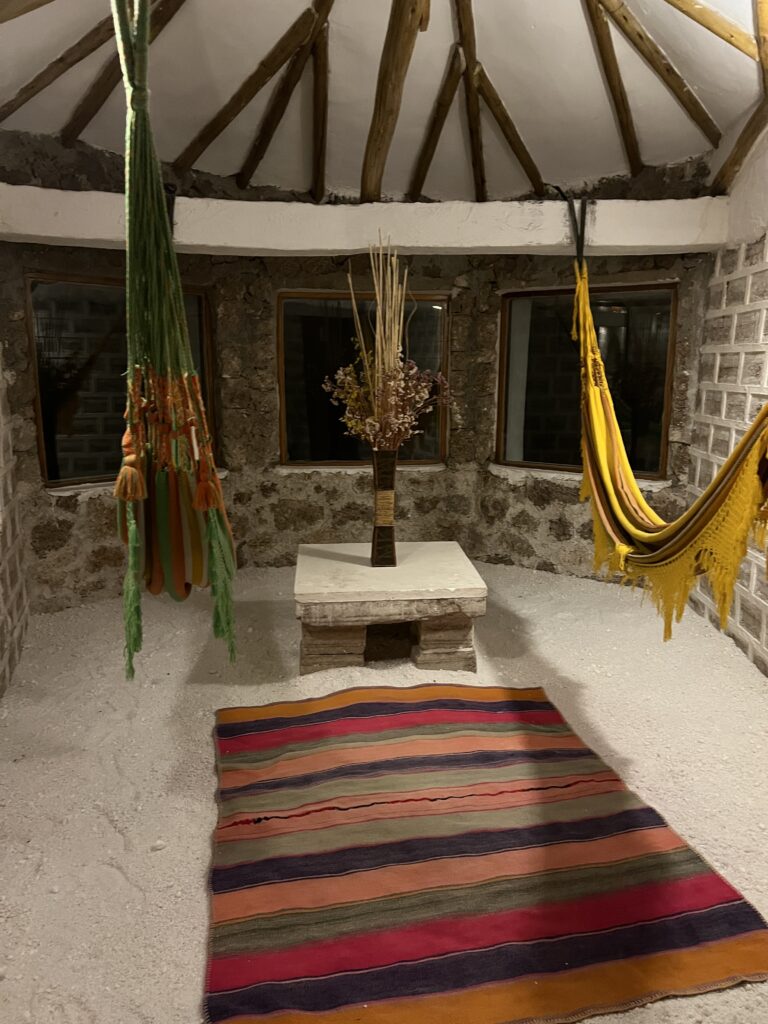
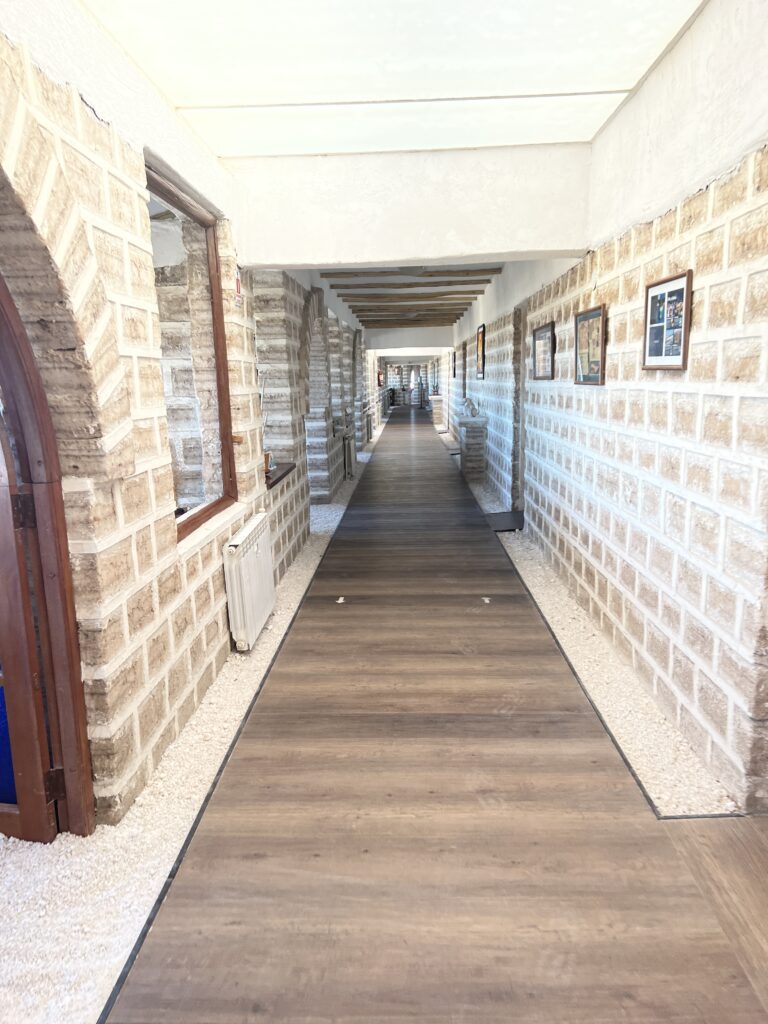
Days 8-10: La Paz and some of the best day trips
Uyuni to Cochabamba/La Paz by plane
Before the pandemic, there were plenty of direct flights to La Paz from Uyuni. Not sure if there are some now, but when we visited Bolivia, there were none. So we booked a flight to La Paz with an interchange in Cochabamba.
Amazing things to do in La Paz:
If you want to read more about exploring La Paz, I have this post about 15+ amazing things to do in La Paz here >>>
On the 4th day in Bolivia, you can either stay in La Paz and continue exploring the city or take one of the day trips and either go to Copacabana (lake Titicaca) or to one of the mountains, or, alternatively, maybe you feel fit to go to the famous death road cycling trip?
Here are some of the best day tours you can take from La Paz:
Private tour to lake Titikaka (requires minimum two people) – you will be able to see one of the most beautiful and biggest lakes in the world
The famous bike tour to the death road (it’s a descent from over 5k over the sea level), but it’s still a very challenging tour, as it requires very good physical condition
Beautiful Palca Canyon Tour with an optional stop at Valle de las Animas
Chacaltaya & Valle de Luna Tour (make sure to bring warm clothes, as Chacaltaya used to be a ski resort)
Condoriri and the lagoons full trekking tour for trekking lovers
Famous Huayna Potosi mountain trek – all the way up to 5000m above the sea level with stunning views (challenging)
Other nice things to do in La Paz:
If you decide to spend the rest of the trip in La Paz, I recommend the following activities:
- Explore Achumani – the posh area of La Paz with plenty of coffee shops and nice restaurants
- Have dinner in Manq’a – a great restaurant specialising in Bolivian food
- Head to the city centre and visit Mercado de las Brujas (Witches Market) where they sell newborn llamas and llama foetuses that hang outside the stalls. They also sell various teas, soaps and candy that are produced for different reasons, e.g. to help finding a job, finding love, getting rich among other things
- Take a street food tour of La Paz – visit some of the best stalls in Mercado Lanza and then visit a restaurant with a tasting of the most popular Bolivian dishes as part of this tour – check the prices and availability here
- Take a teleferico tour of La Paz – book it here) Our guide, Maria, told us a lot about the history of La Paz and El Alto and about the Cholitas (women in traditional Bolivian dresses) and Cholets (a word-play for Cholitas + Chalets), which wealthy Aymara (indigenous people) of El Alto and La Paz build for themselves. There is also a very interesting tour of the best Cholets in El Alto including visiting a party – you can find out more here >
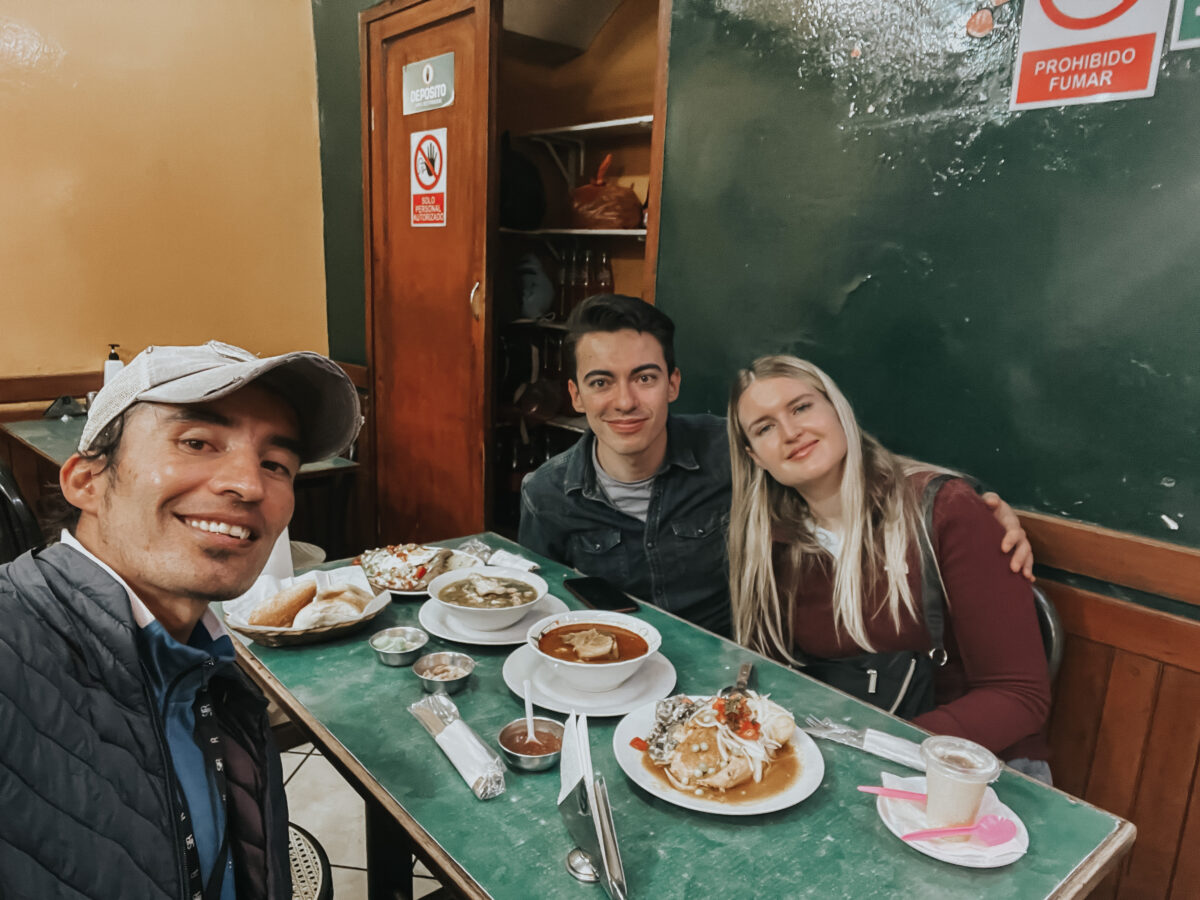
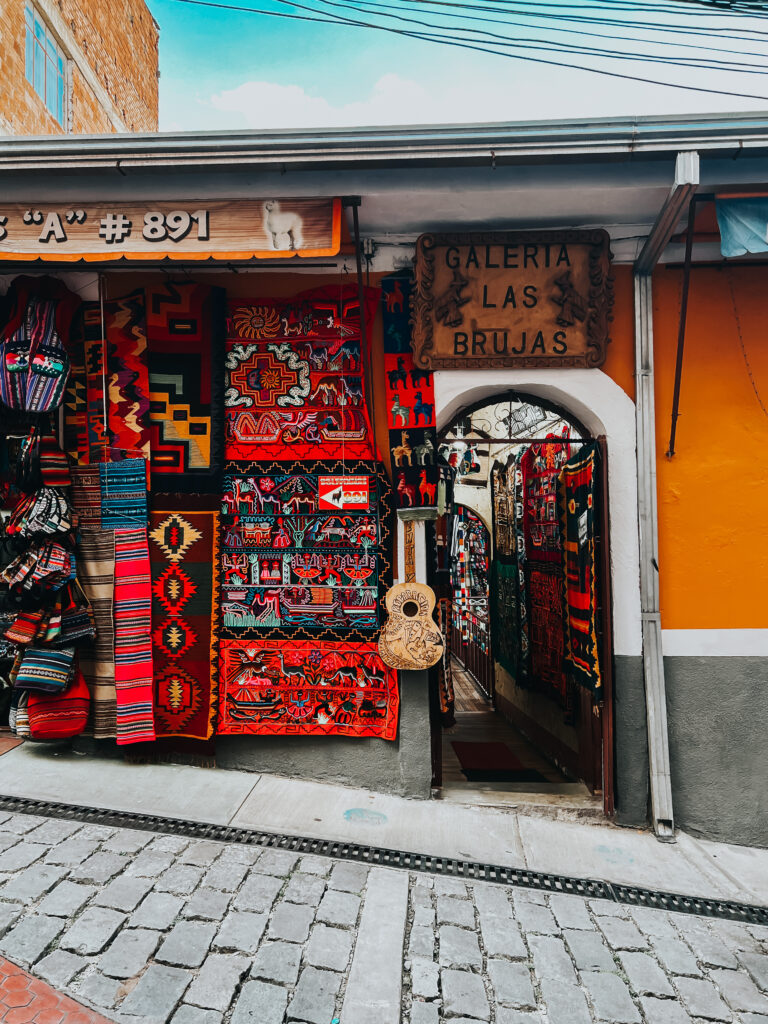
Flying to Quito:
As I mentioned before, most international flights depart from La Paz very late at night – one at 3:30am, another one a bit later, so it’s hard to decide whether to go to bed early and try to sleep 3-5 hours before the flight or not sleep at all and sleep in Quito instead. We decided to try to sleep at the hotel for 3 hours and then slept for 2 more hours in one of the flights. Our flight to Ecuador was through Bogota (yet again), so we arrived in Quito around 9 am.
Days 11-12: A trip to Mindo from Quito, Mitad del Mundo
Picking up our rental car
In Quito, it took us less than 20 minutes to pass all the border checks and pick up our bags. Our car rental experience wasn’t great as they tried to overcharge us for the car deposit, but in the end, they charged us the correct amount as we were able to show them our original booking. Make sure to have internet access or print out your confirmation in advance! We also got a manual car for a price of an automatic one (which is a downgrade), but that’s a regular car rental experience in Central and South America unfortunately (we had the same in Costa Rica). You can rent a car online here.
Exploring Mindo
After a quick lunch in a nearby shopping mall, we started our drive towards Mindo. Mindo is one of the most beautiful places in Ecuador and it usually takes around 1.5 to 2 hours to get there. The road to Mindo is very scenic! You will pass very tall mountains, beautiful forests and a lot of stunning viewpoints.
Mindo is a small town famous for its Cloud Forest – a very special ecosystem, a tropical evergreen forest, which is home to a very high number of birds. In Mindo, we booked a beautiful lodge called Casa Divina. Casa Divina had two lovely walking trails on its territory and we decided to explore them shortly after our arrival. After dinner in Mindo town, we also had a night jungle tour around the Casa Divina with the owner of the hotel as well.
Birdwatching in Mindo
We spent the entire morning of our second day in Ecuador birdwatching. To be able to see many birds, you need to wake up very early. Casa Divina has an amazing rooftop terrace and a small spot, where they lay fruits every morning, so the birds come to the property for a morning feast. The terrace of Casa Divina usually opens at 7am and the breakfast starts around 8am.
Some people come to Mindo to see the famous and very rare bird, cock of the rock. In order to see them, you actually need to wake up extra early and hike for a while. You will have higher chances to see cock of the rock if you go with a guide, and it might be the best option despite the fact that the tours are pretty expensive. You can find out more about these tours here.
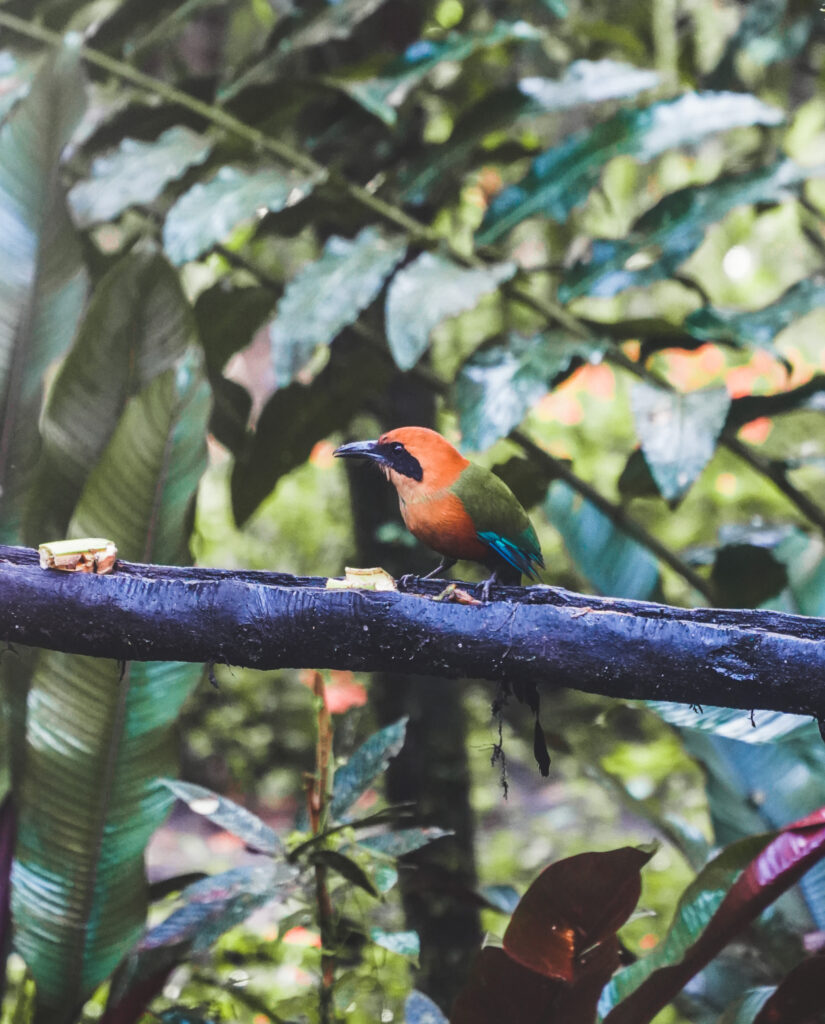
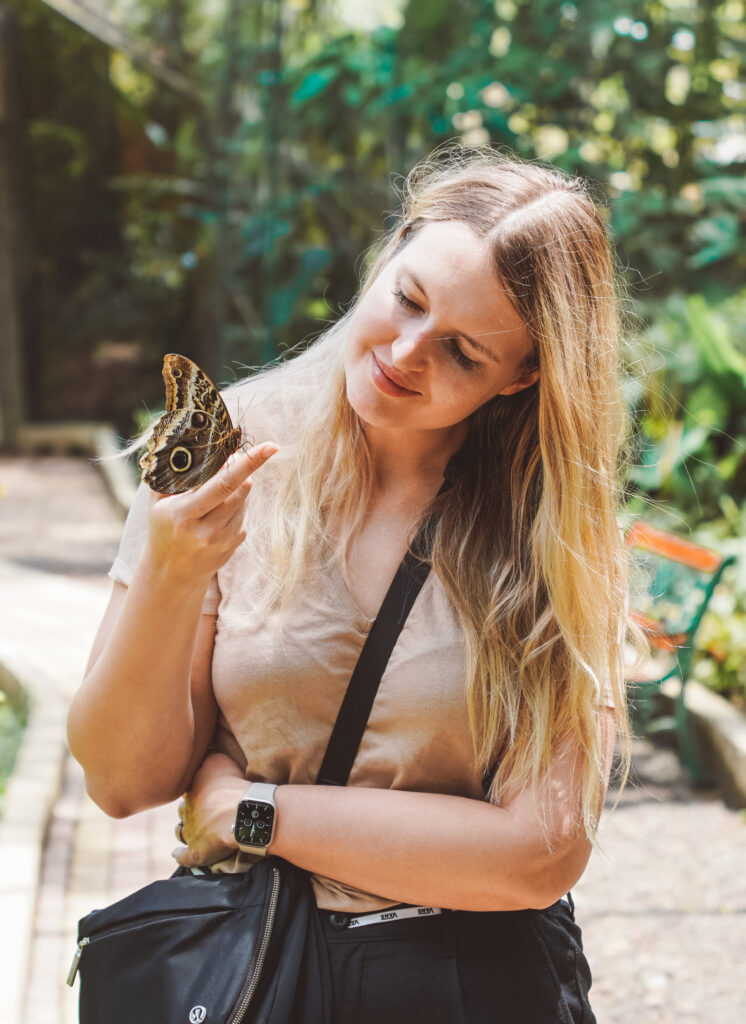
Other things to do in Mindo
There are plenty of other nice things to do in Mindo besides birdwatching. Here are some of the things I would recommend:
- Mindo Zip Line – an amazing zip line that consists of 10 different tracks. You can book it online here
- The Mariposas de Mindo – the butterfly sanctuary. It costs around $6 per person to visit and even includes a small tour. You can see 3 types of butterflies there and there are so many of them, thousands or even more
- Mindo Cable Car – it brings you to the Nambillo Waterfall and has open cabins, so you can easily observe the surroundings, take photos and look for birds! You can book your ticket in advance here
- Cocoa and chocolate tasting and tours – if you want to learn a bit more about how cocoa beans are grown and how chocolate is made, you can book one of the cocoa and chocolate tasting tours like this one. Alternatively, you can visit a cafe like Mindo Chocolate and try chocolate there as well as buy some chocolates at the local store.
Heading back to Quito, visiting Mitad del Mundo
We spent the first half of our day in Mindo, visiting some of the best attractions, then had a lunch there and around 2:30 pm, we headed towards Quito. On our way, we decided to stop at another, world-famous attraction, Mitad del Mundo!
Mitad del Mundo is a line which separates the North and the South Hemispheres. The actual geographically correct line is somewhere 200 meters away in the village, but in Mitad del Mundo, you can visit a museum, put a few stamps that you can stamp your passport with, eat something at the countless restaurants and buy some souvenirs at the local stores. And, of course, you can take a lot of photos!
We spent the rest of the evening in Quito – we checked in at our hotel Ibis and then headed to a nearby shopping mall for a quick dinner and last-minute shopping for the Amazon adventure.
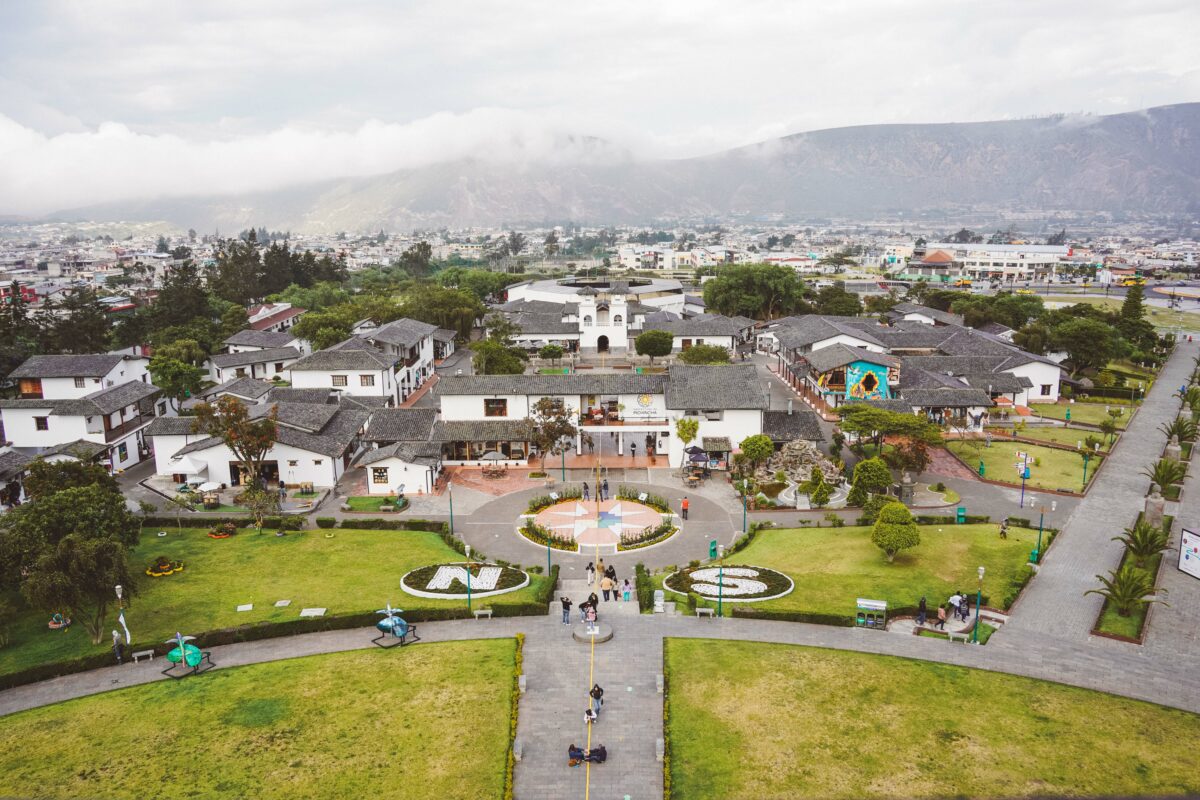
Days 13-15: Staying in the Amazon in Ecuador – Napo Cultural Center
Getting to the Amazon lodge in Ecuador (Yasuni National Park)
We decided to pick Yasuni National park as our destination for exploring the Amazon jungle in Ecuador. We picked Yasuni for multiple reasons. First of all, it didn’t have any cases of Malaria in the last 50 years. Secondly, it was relatively easy to get there. Finally, it had amazing reviews and lodges that weren’t too expensive.
In order to get there, we took an early morning flight to Coca Airport which took less than 30 minutes. Then we took a taxi to the river port, found our guide, and waited for another couple, who arrived in a later flight and enjoyed the 2-hour speedboat ride to the lodge. We were also offered a very nice lunch box while in the boat!
Our experience at Napo Cultural Center – a fantastic affordable amazon lodge in Ecuador
Throughout our stay at Napo Cultural Center everyone who worked there was incredible – very friendly and polite! From our amazing guide to the chef at the restaurant and people from the community, everybody made us feel very welcome!
I wouldn’t dive deep into our itinerary, as it differs depending on the season, the weather and the number of people in the group. We were incredibly lucky to arrive on the dates when there were no other arrivals, so we pretty much had our guide to ourselves!
What to expect from Napo Cultural Center
Your days at Napo Cultural Center follow a specific schedule. You usually wake up pretty early in the morning – around 5am or 6am(all the bird activity happens in the morning), have breakfast and head out with your guide. During the morning trips, you can either go to the clay licks or to one of the observation towers if the weather permits. You can also stay at the lodge and visit the women in the community and see them perform their traditional dances and rituals.
Then you usually go back to your room for a quick change and head out for lunch. After lunch, you usually have an hour or two to rest to avoid venturing out during the hottest time of the day.
Around 3 or 4pm, you meet with your guide again and you venture out for another activity such as a shorter walk / ride to an observation tower. After that, you’ll have a dinner and have some time to rest. There is satellite internet at the lodge, so you can check up on your relatives and friends. There are rarely any activities after dinner. We only had a short night walk in the jungle once with our guide.
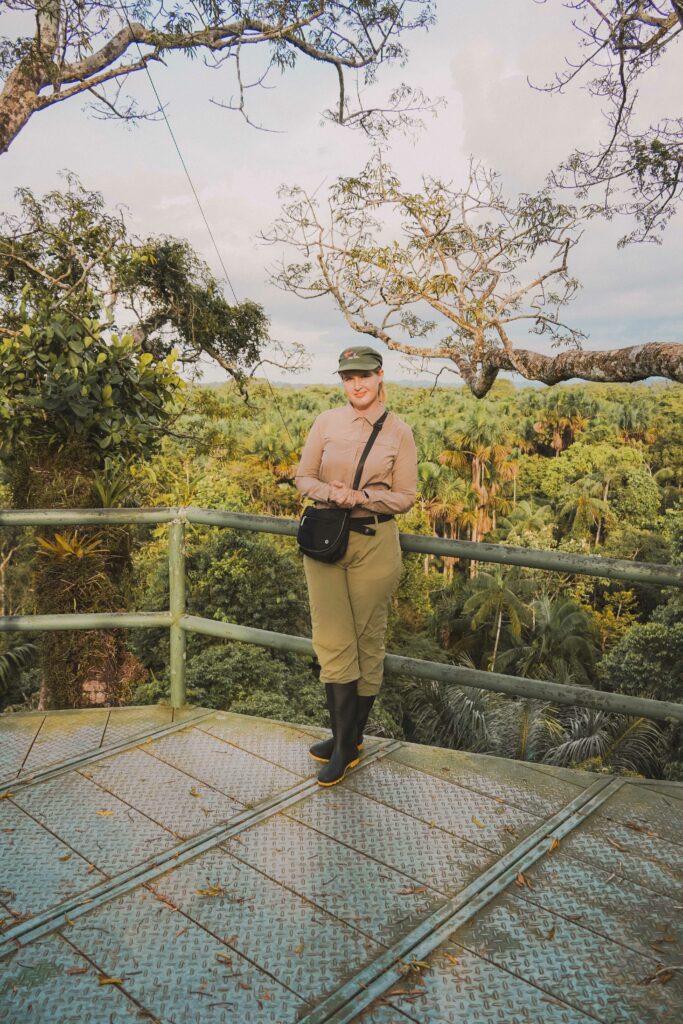
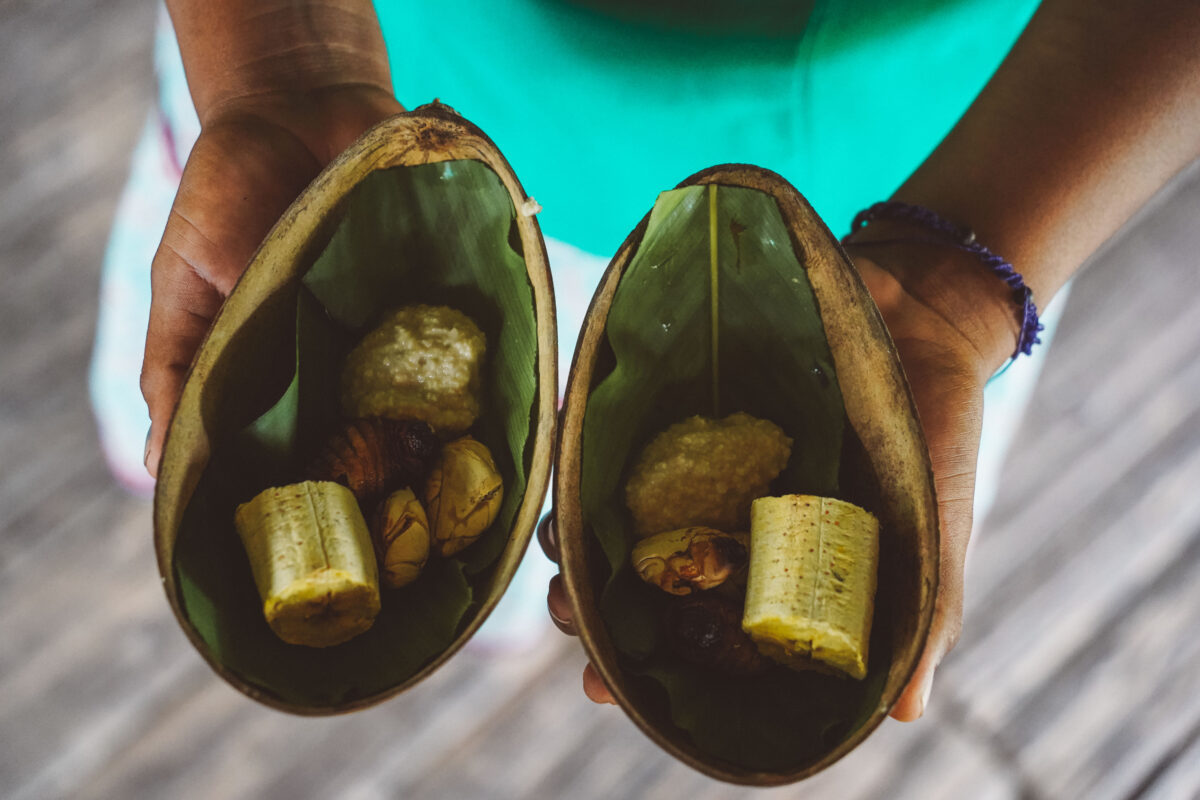
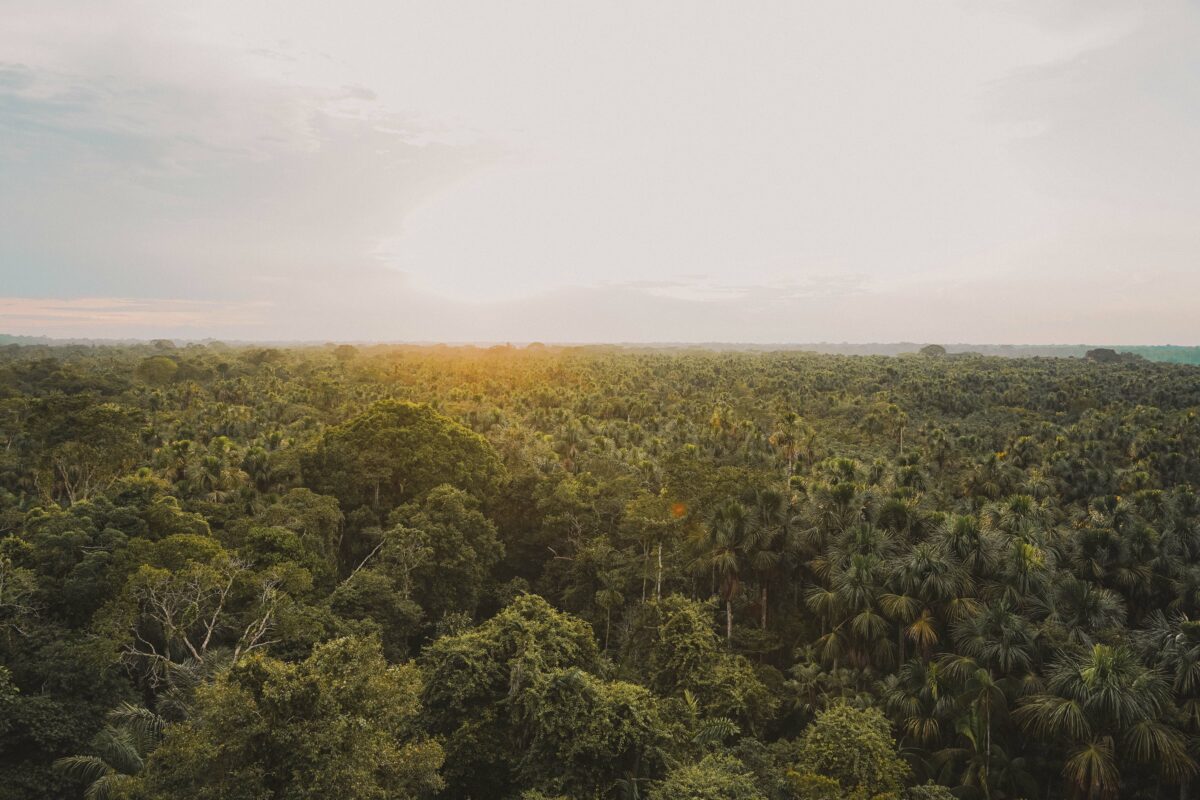
Day 16: Exploring the city centre of Quito
The journey back from Yasuni National Park to Quito
We had to wake up very early, around 5 am to be able to catch the speed boat to Coca. Our guide travelled with us back to Coca – and just like on arrival, the staff members packed a nice breakfast for us, which was very lovely! We arrived to the airport with a couple of hours to spare. Coca airport is tiny, and there isn’t much to do there. However, there are two cafes where you can eat something in case you’re hungry or just have a cup of coffee.
Exploring the Historic Centre of Quito
On arrival back to Quito around 11:30 am, we didn’t have a rental car anymore and had to take a taxi. We left our bags at our hotel – we booked Hotel San Fransisco de Quito. It was very affordable and looked just like the “Casita” from the Encanto movie! However, if you have a bigger budget, these two hotels might be even a better option: Hotel Casa Gangotena or Plaza Grande Hotel
If you have an opportunity, I recommend joining a walking tour that would bring you to the main highlights in the city. You can book one here.
Here are some of the best things to see in Quito:
- Basilica del Voto Nacional
- San Francisco Church
- El Panecilo
- Iglesia La Compañía de Jesús
- La Ronda street – there are a lot of nice traditional restaurants there, plus the street is very pretty
- A panorama of Quito from your hotel rooftop terrace (most hotels have them)
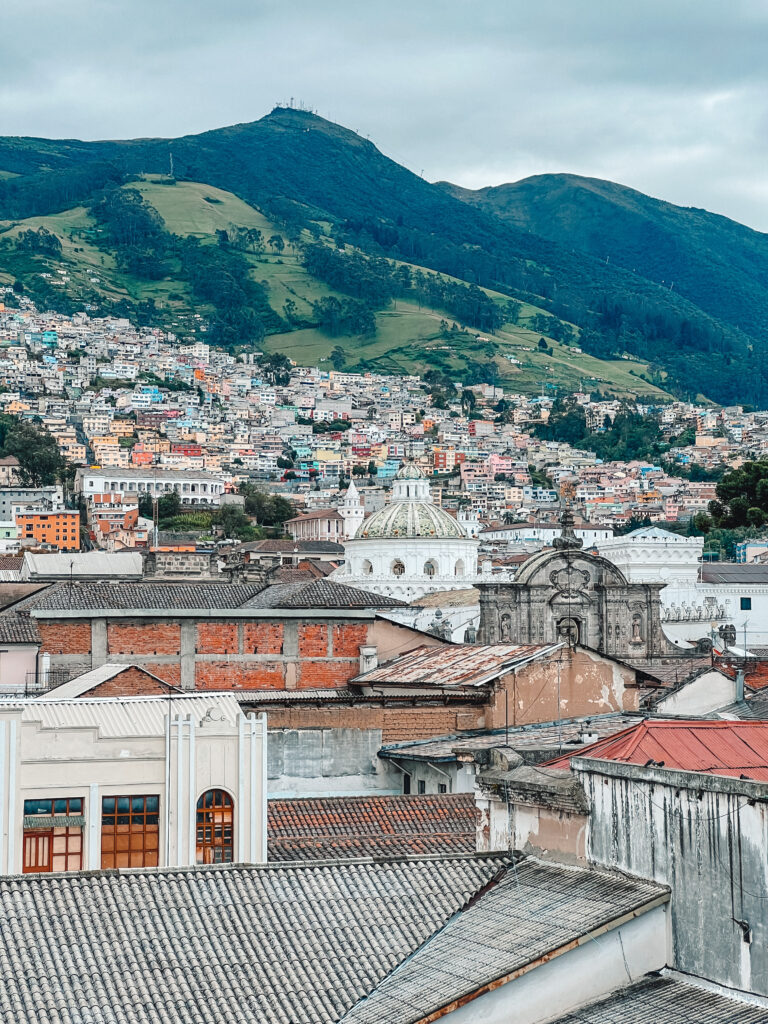
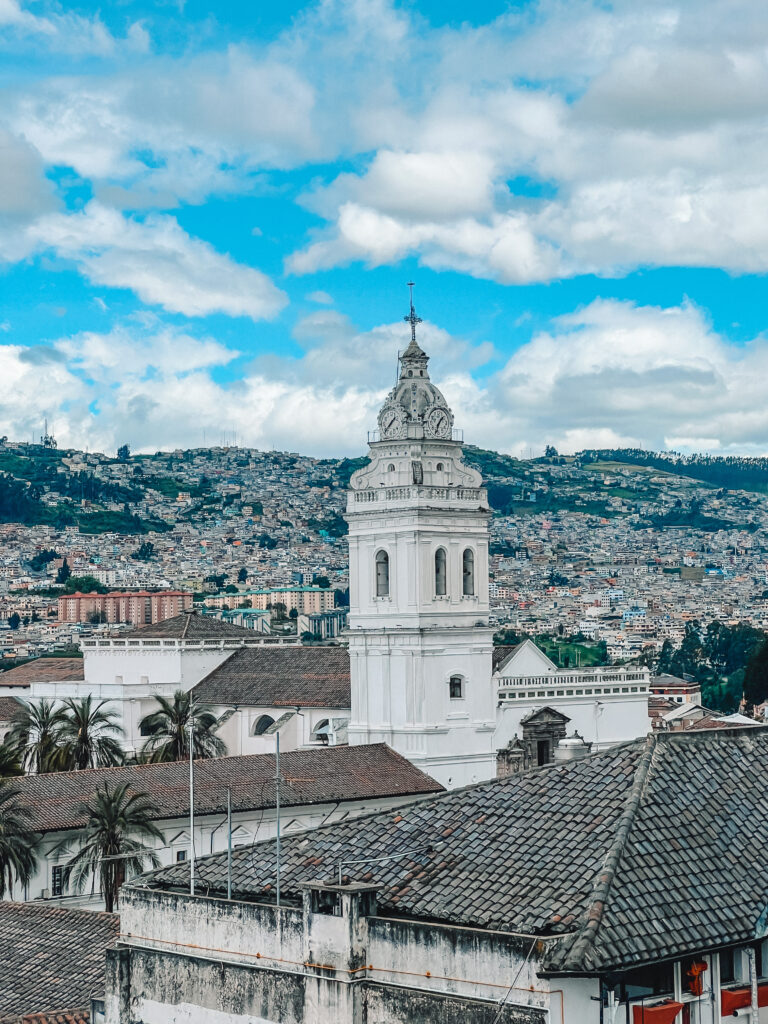
Safety issues in Quito
Unfortunately, the social inequality is quite strong in Quito and crime is on a rise in the capital. It is not advised to walk in the city centre of Quito after dark – a lot of tourists get mugged. Most of the hotels in the city centre close their doors after dark. If you decide to walk in the city centre after dark, you might be stopped by the police and escorted back to your hotel.
Getting ready to fly back:
Since our flight was departing very early, around 3:30am, we decided to go to sleep very early, around 8pm and tried to get at least 4 hours of sleep. It took us just around 35-40 minutes to get to the airport this late at night!
Our return flight to Lima was, of course, through Bogota and then we had our return flight to London (of course via Bogota again), so we managed to visit Bogota airport twice in one day. We tried to change the tickets before, but were quoted $3000 per person to skip Lima and just depart from Bogota to London, so we abandoned that idea. However, if you do more careful planning, you would be able to avoid such inconvenient flights!
Summary of our 16-day trip around South America: Peru, Bolivia and Ecuador in 2+ weeks!
I hope you found this blog post useful and got some new ideas on how to spend just over 2 weeks in South America and visit more than 2 countries. Initially, we were planning to visit Chile as well, as it would have been so easy to just cross from Uyuni to Chile and spend a few days there and then fly to Ecuador from Chile, however, due to their strict pandemic policies it was sadly not possible.
If you have any questions about this itinerary, feel free to message me on Instagram – you can find me as @lizatripsget!
Some other posts you might like:
5 days in Peru: Lima, Cusco and Machu Picchu
5 days in Bolivia: La Paz & Salar de Uyuni
3 days in La Paz: the best things to do and day trips from La Paz
Weekend itinerary for Lima: the best things to do & restaurants to visit
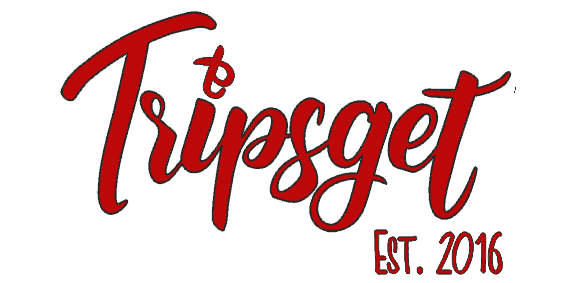
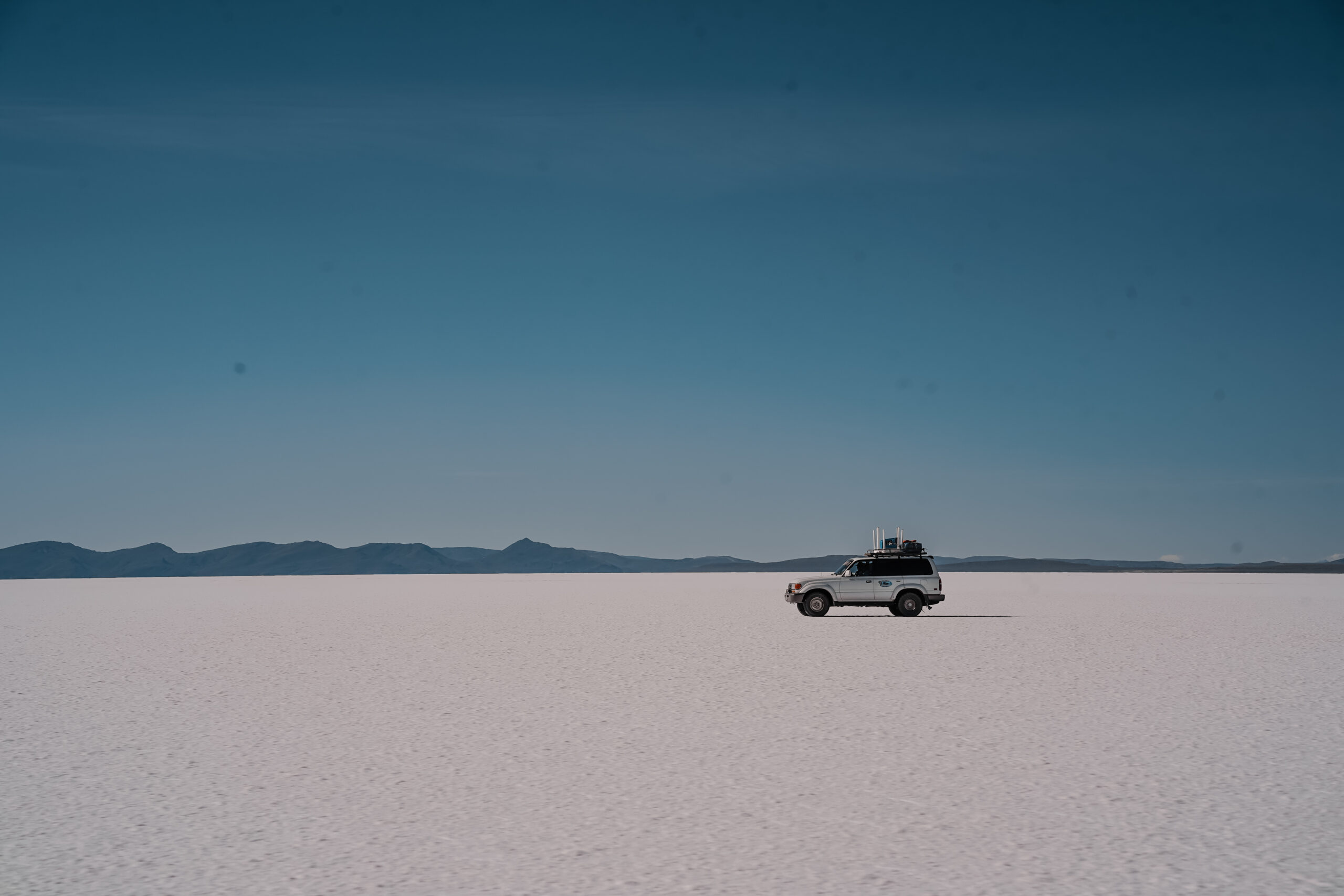
This has been incredibly useful. I am planning a trip to these three countries later this year and have almost the same amount of time. Your blog explained everything nicely and in detail. Were there any places you would have skipped if you look back or added any others to your itinerary instead?
Thank you! I wouldn’t have skipped La Paz, as it’s an amazing city, but I would have spent a but less time there, 1.5 days would be more than enough!
this is really helpful. We are planning to travel those places summer 2024. Would you mind sharing how much total cost after travelling 3 countries?
thank you!
Hi! The total cost was around £6000-7000 GBP, which, of course, is a lot, but that was mainly because of super expensive flights between the countries